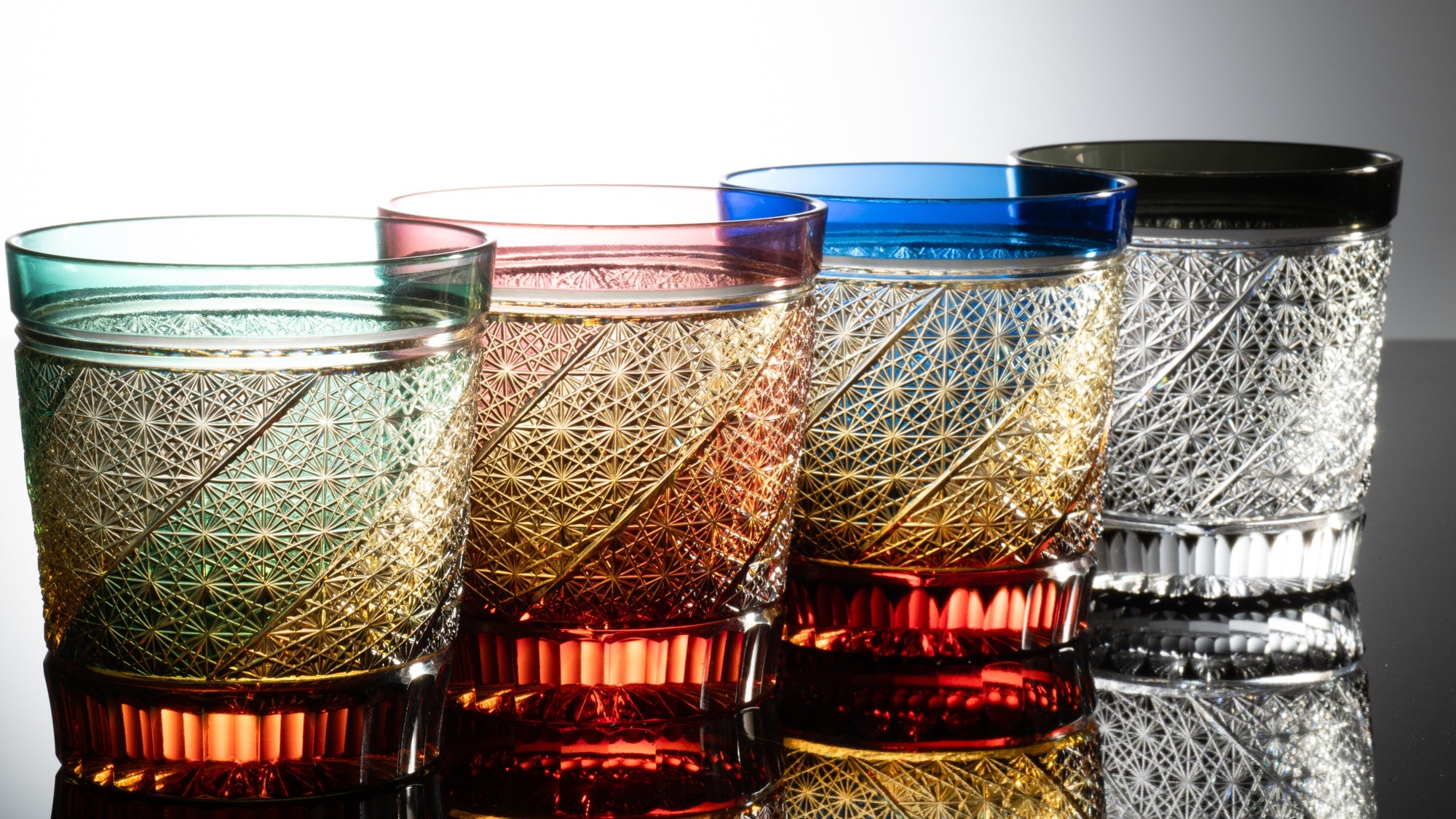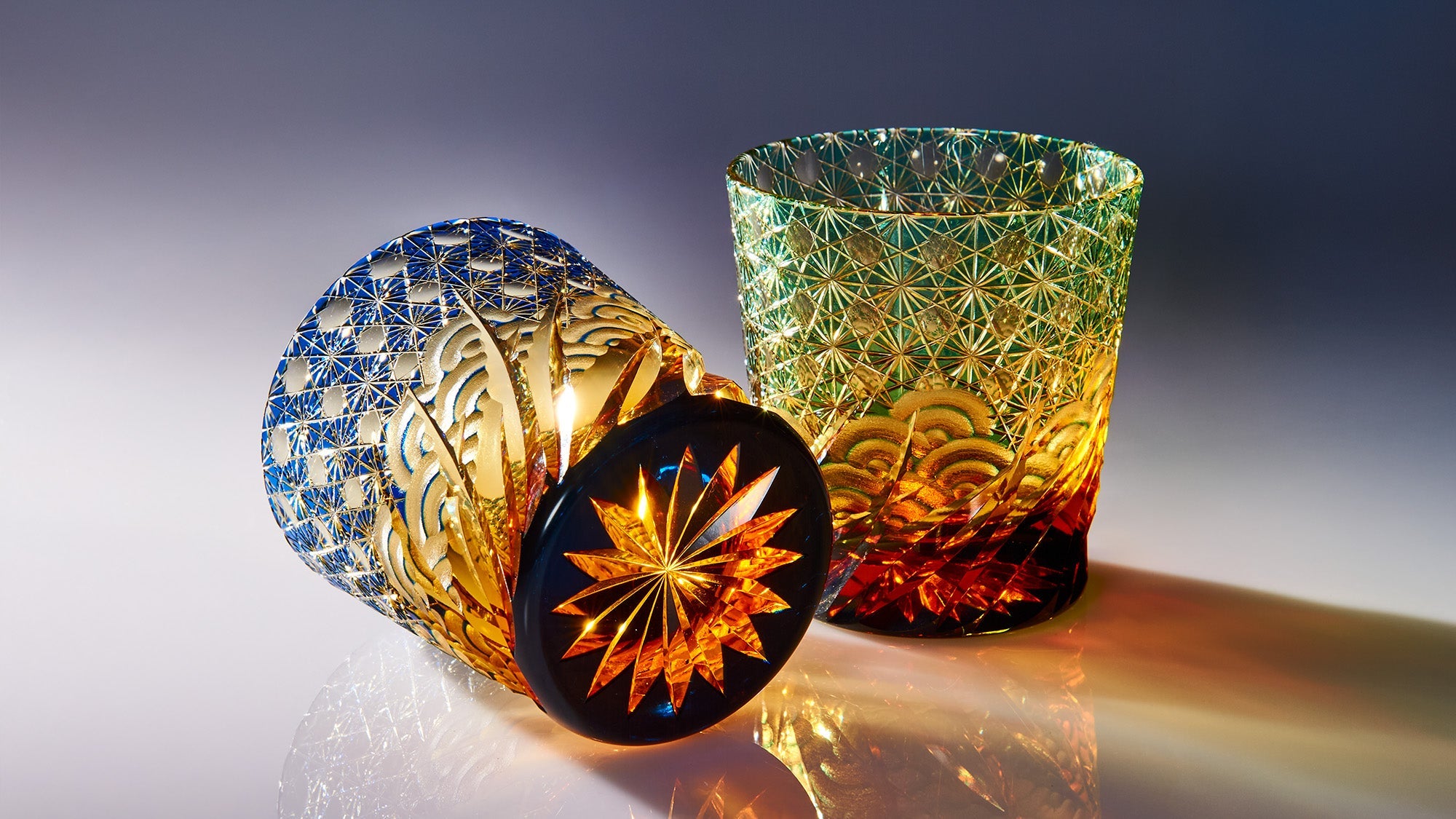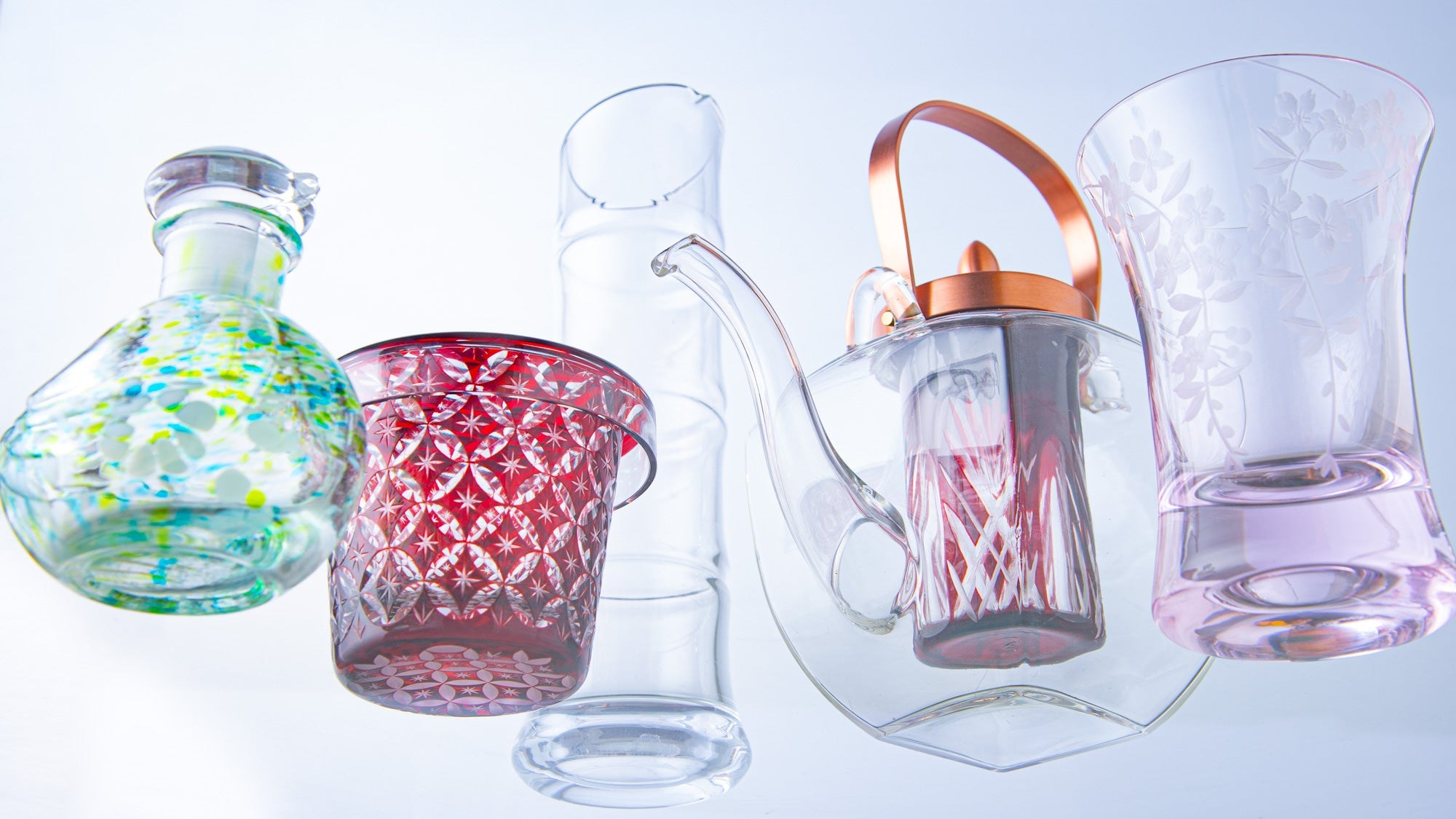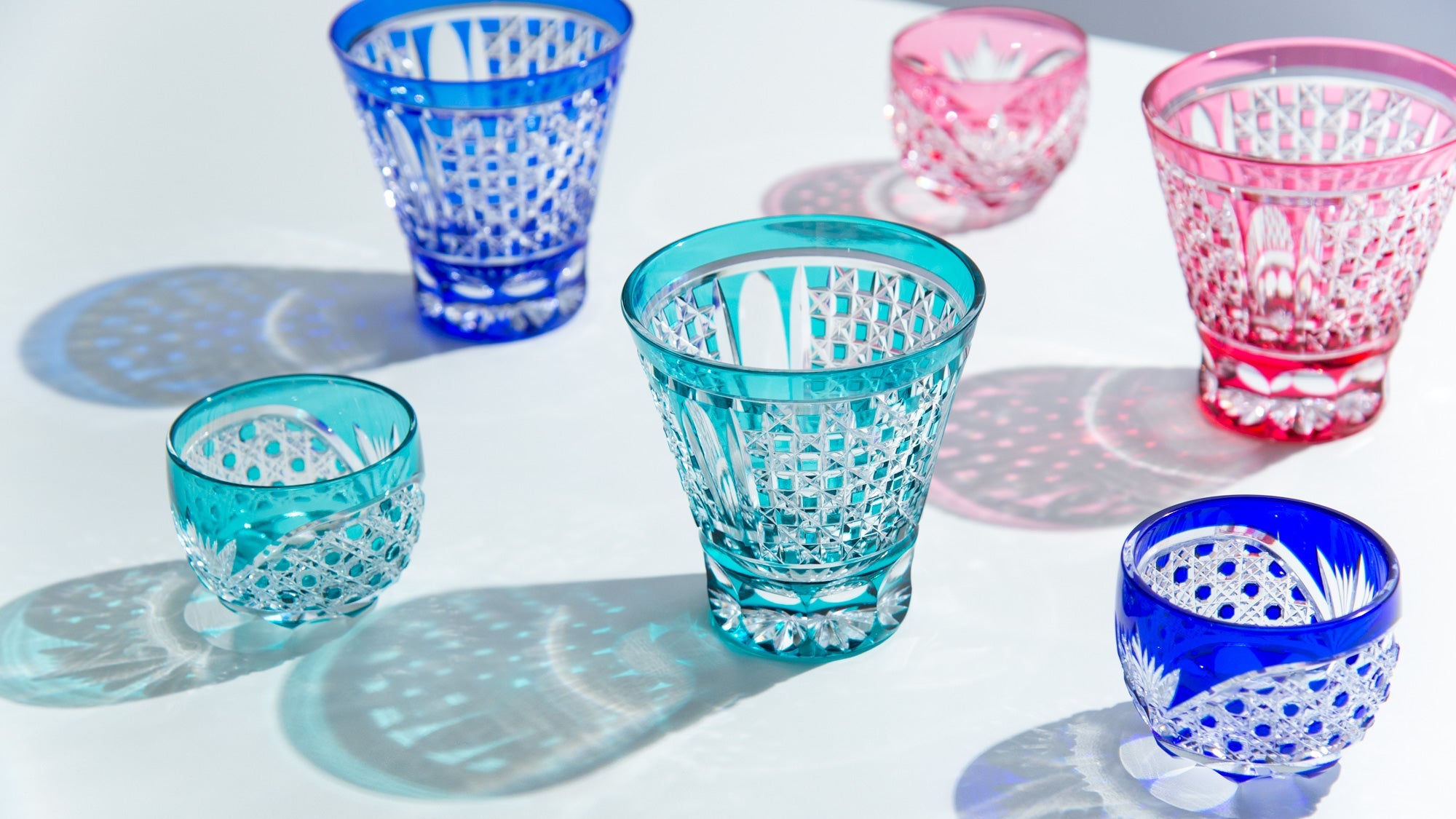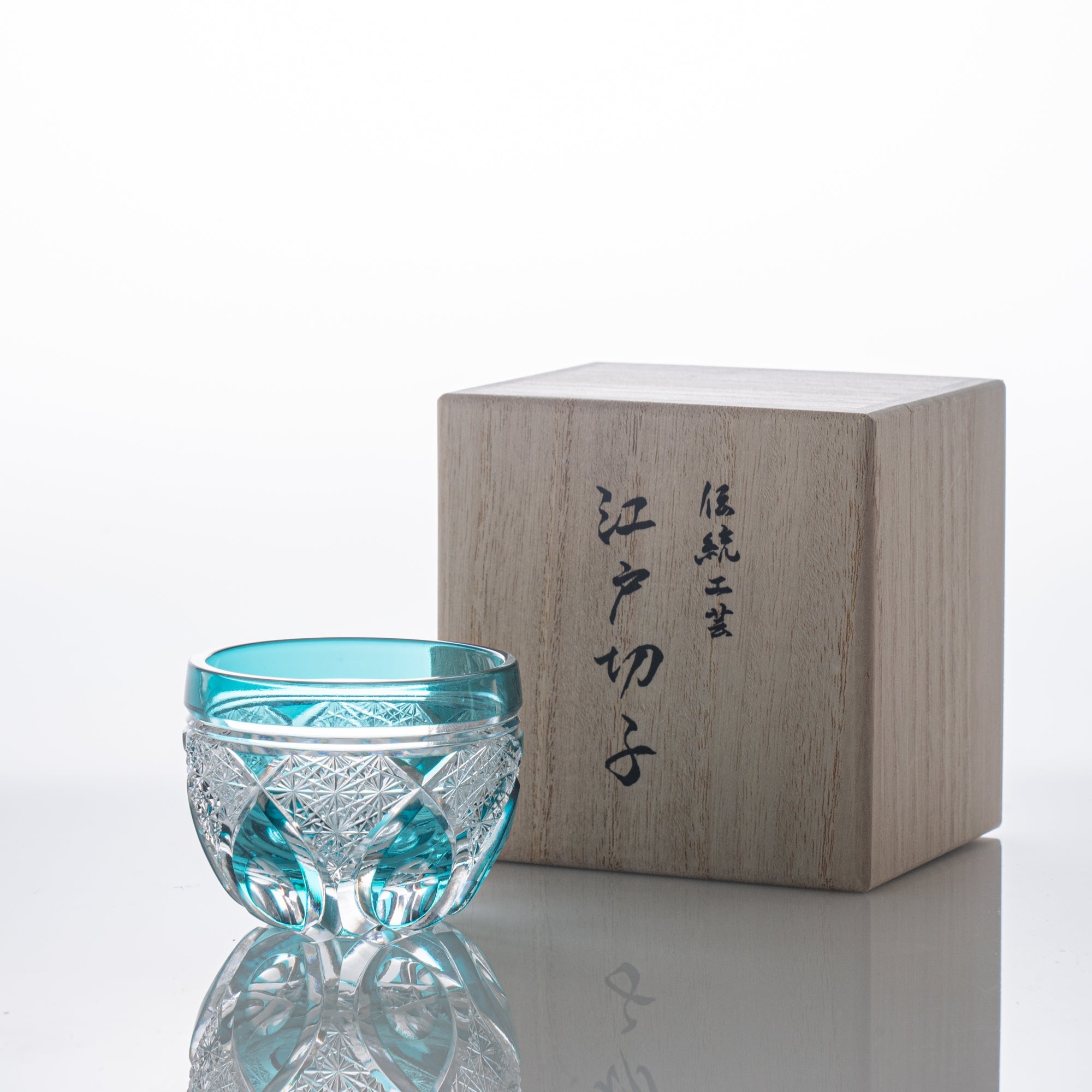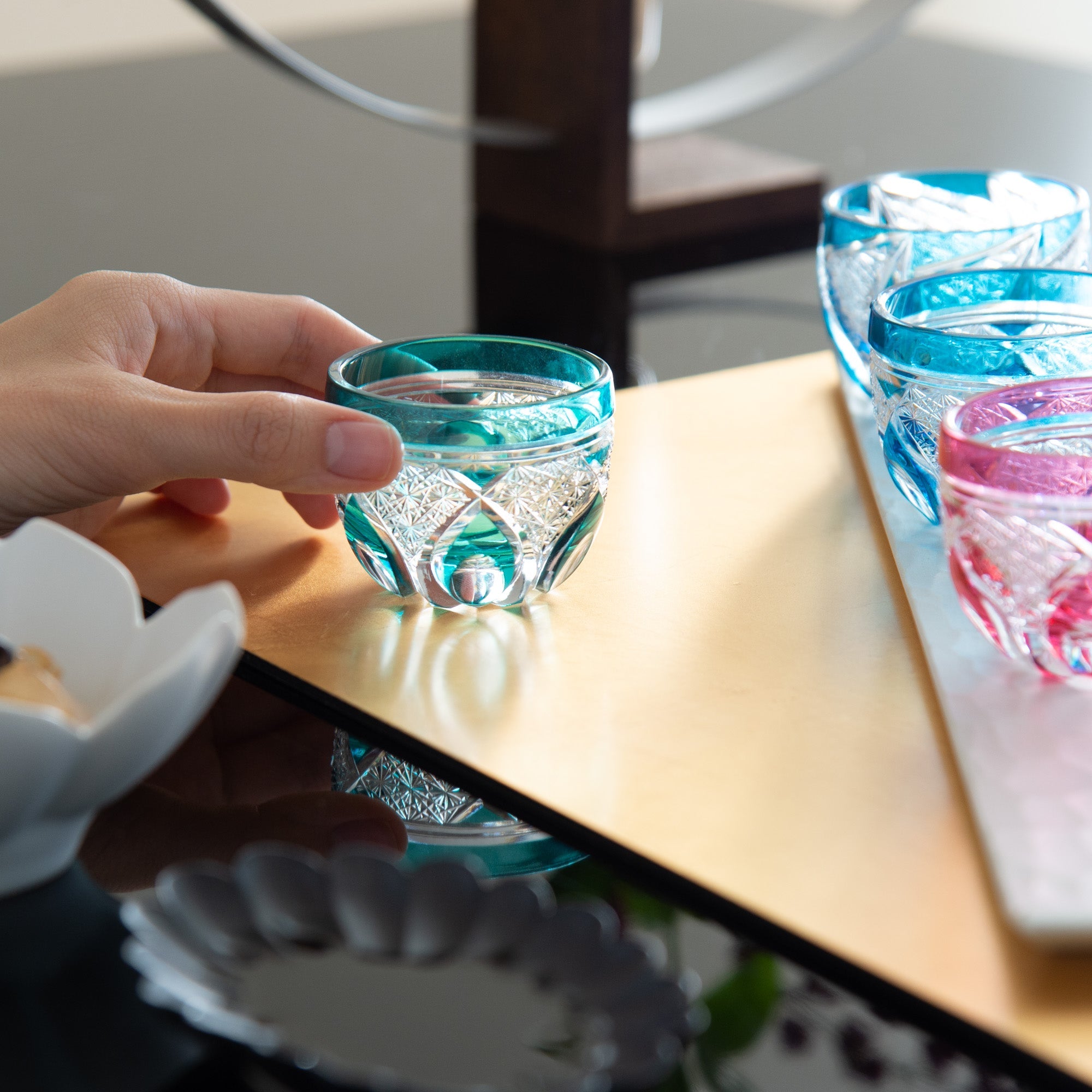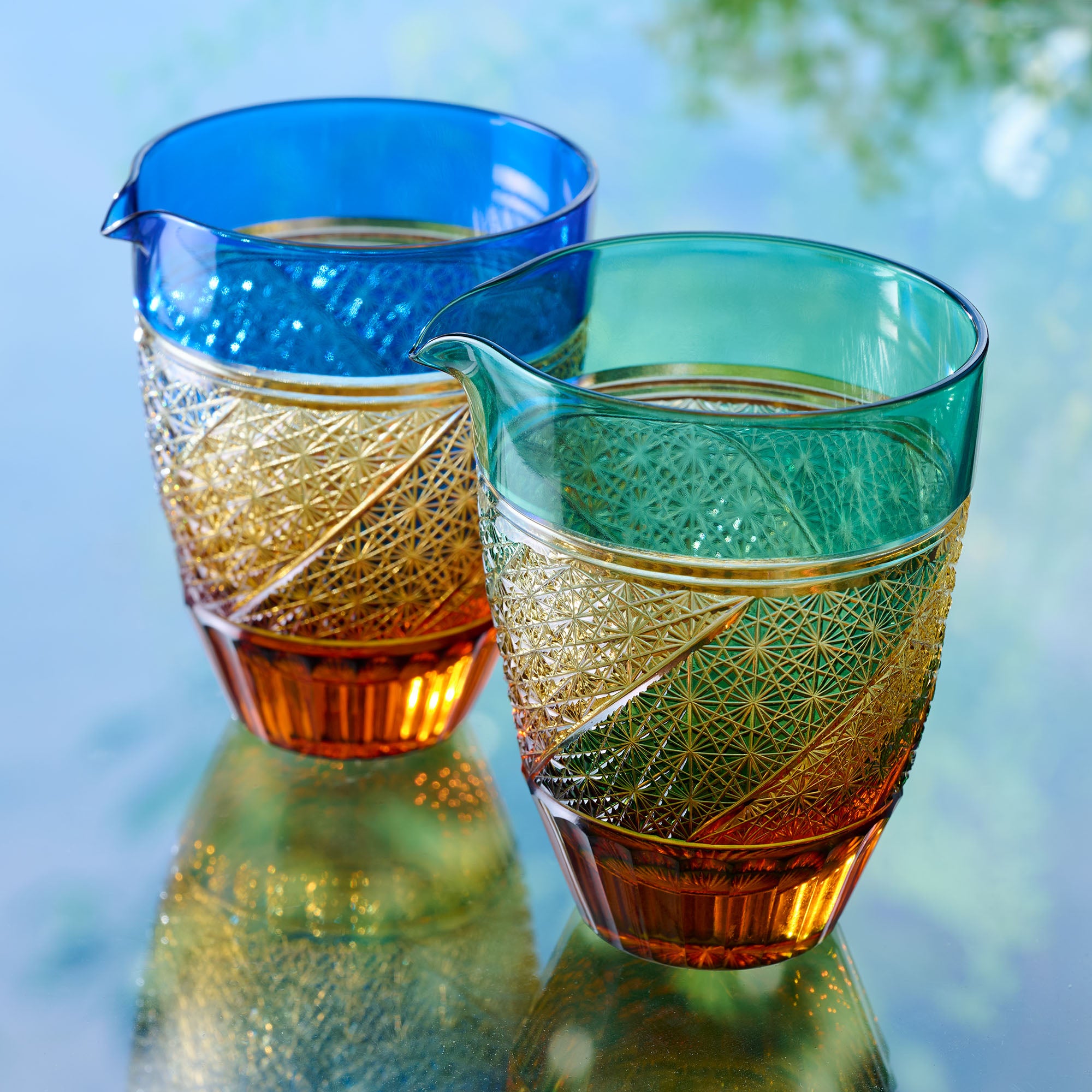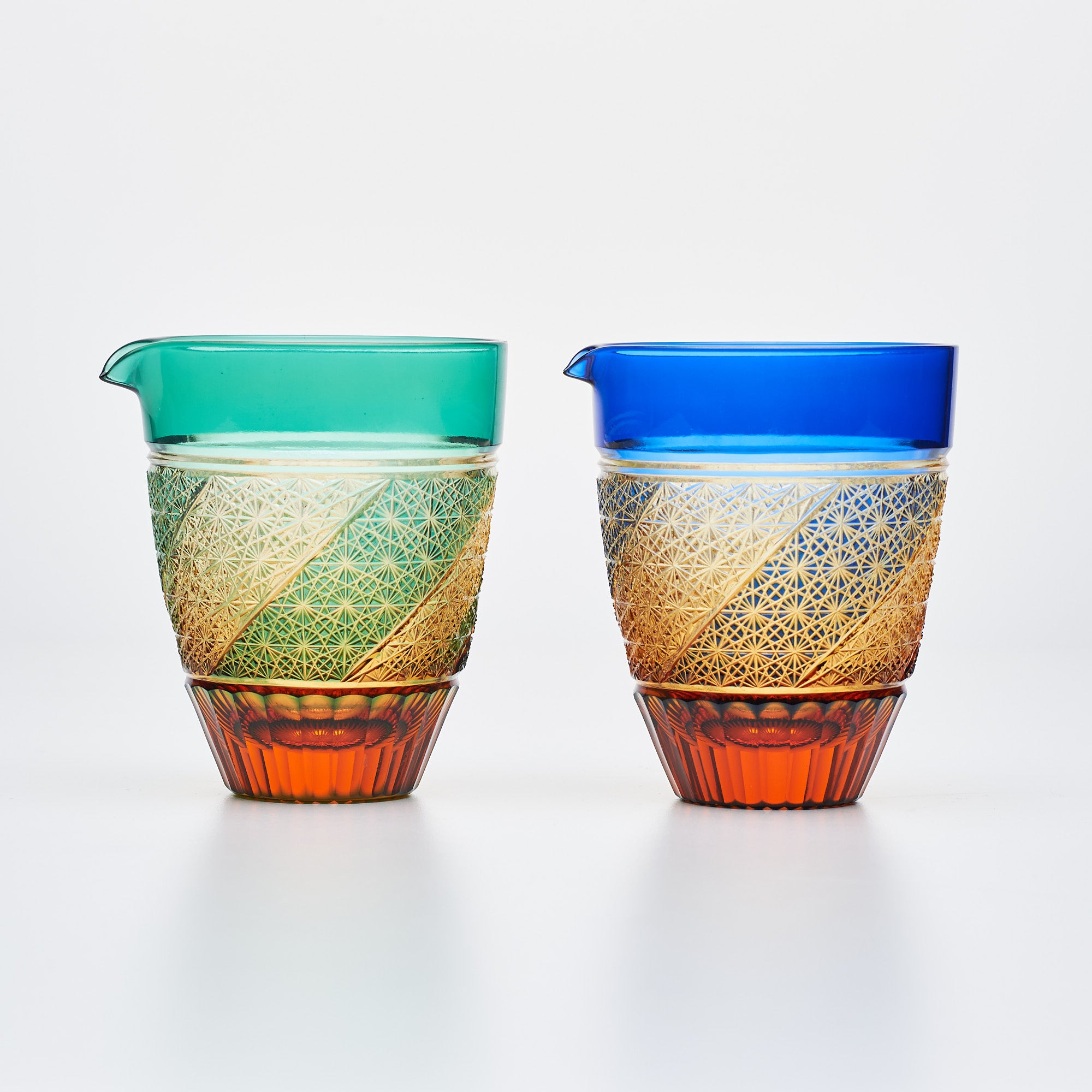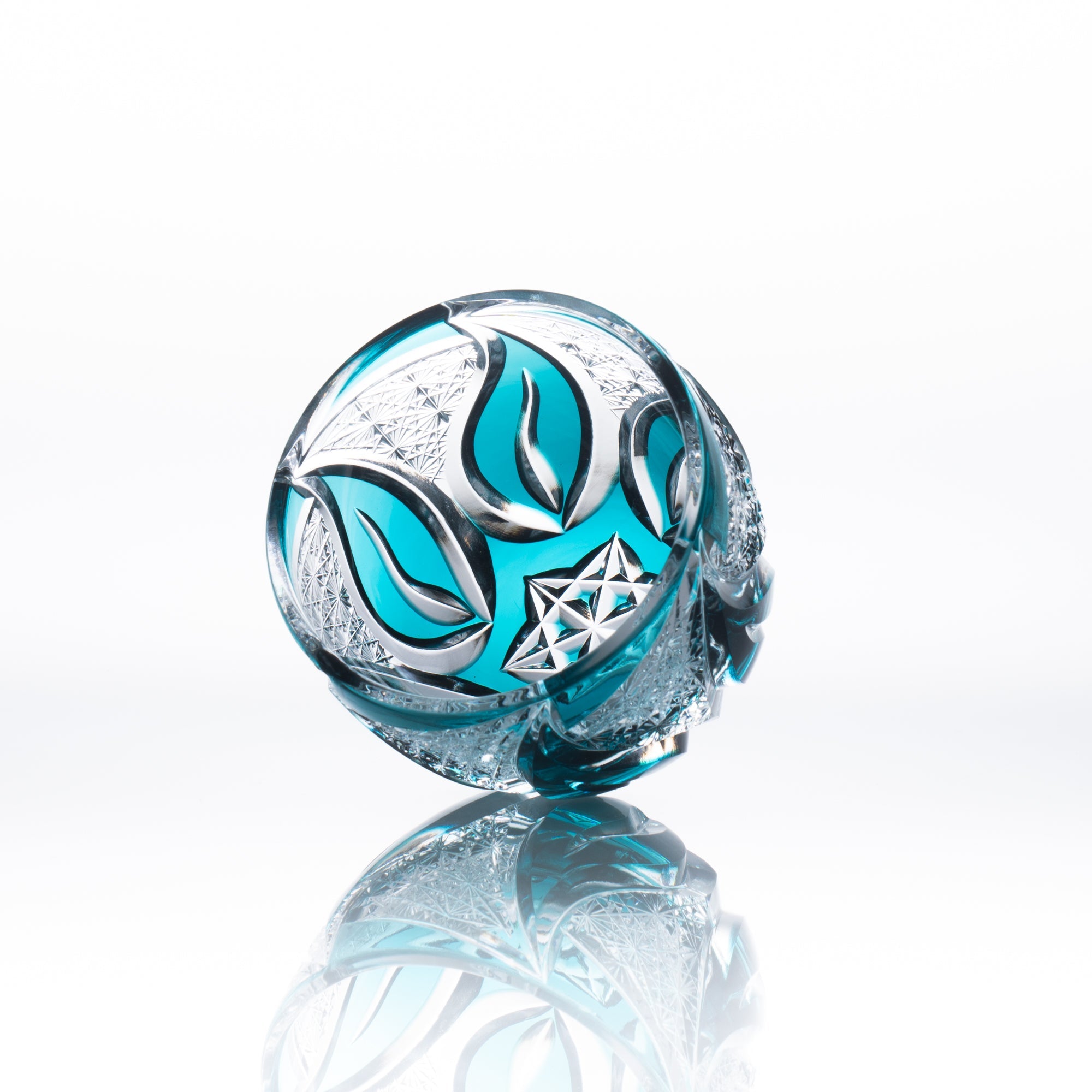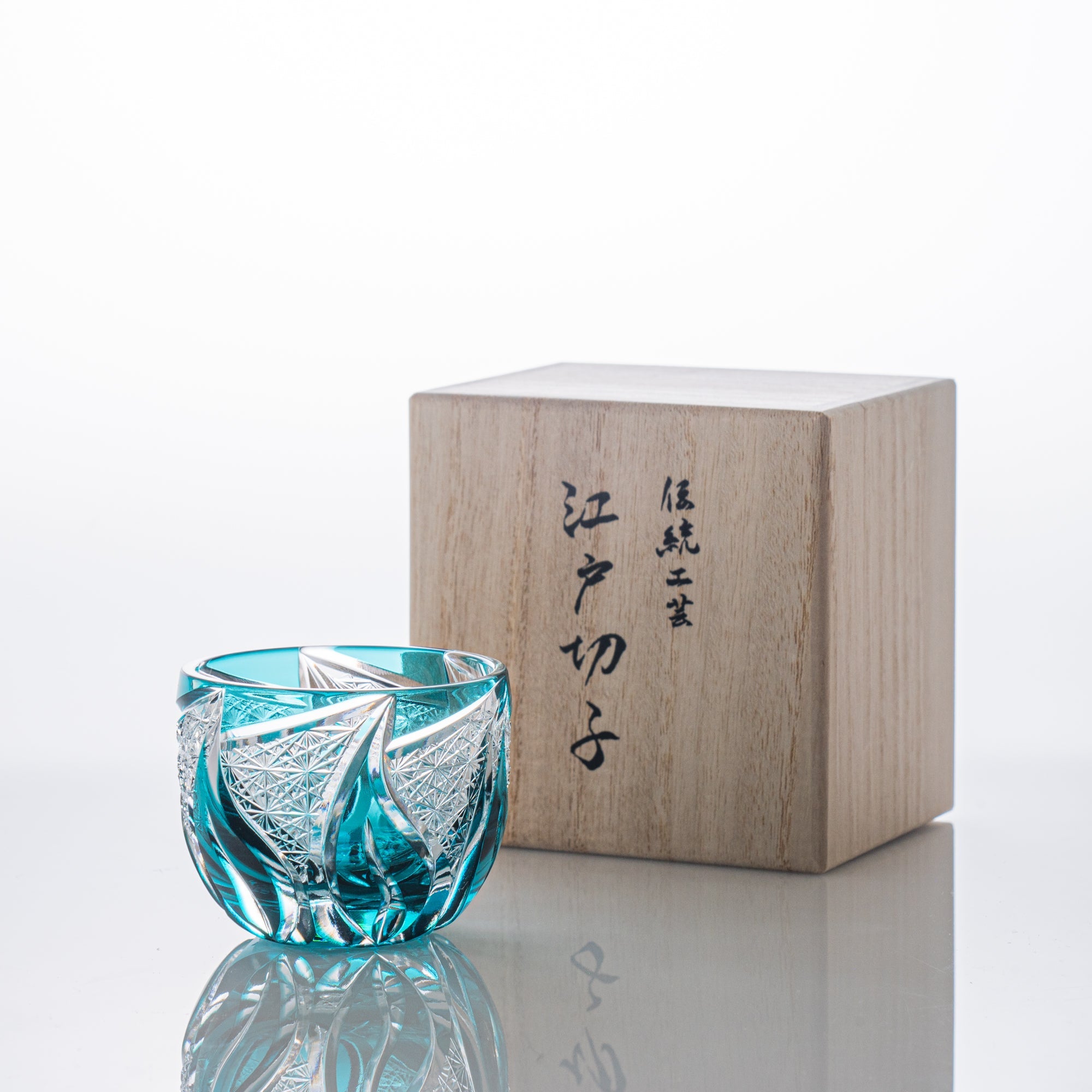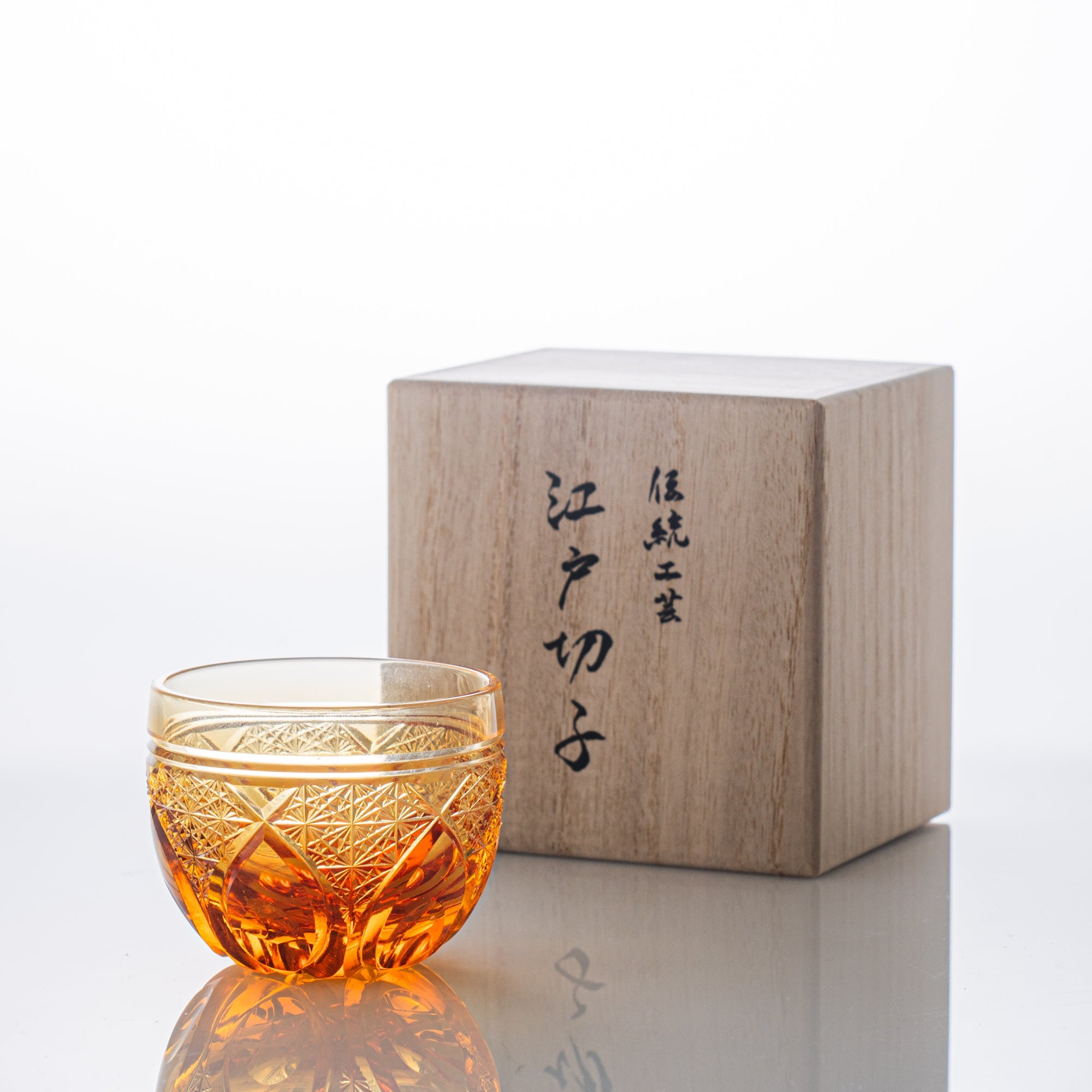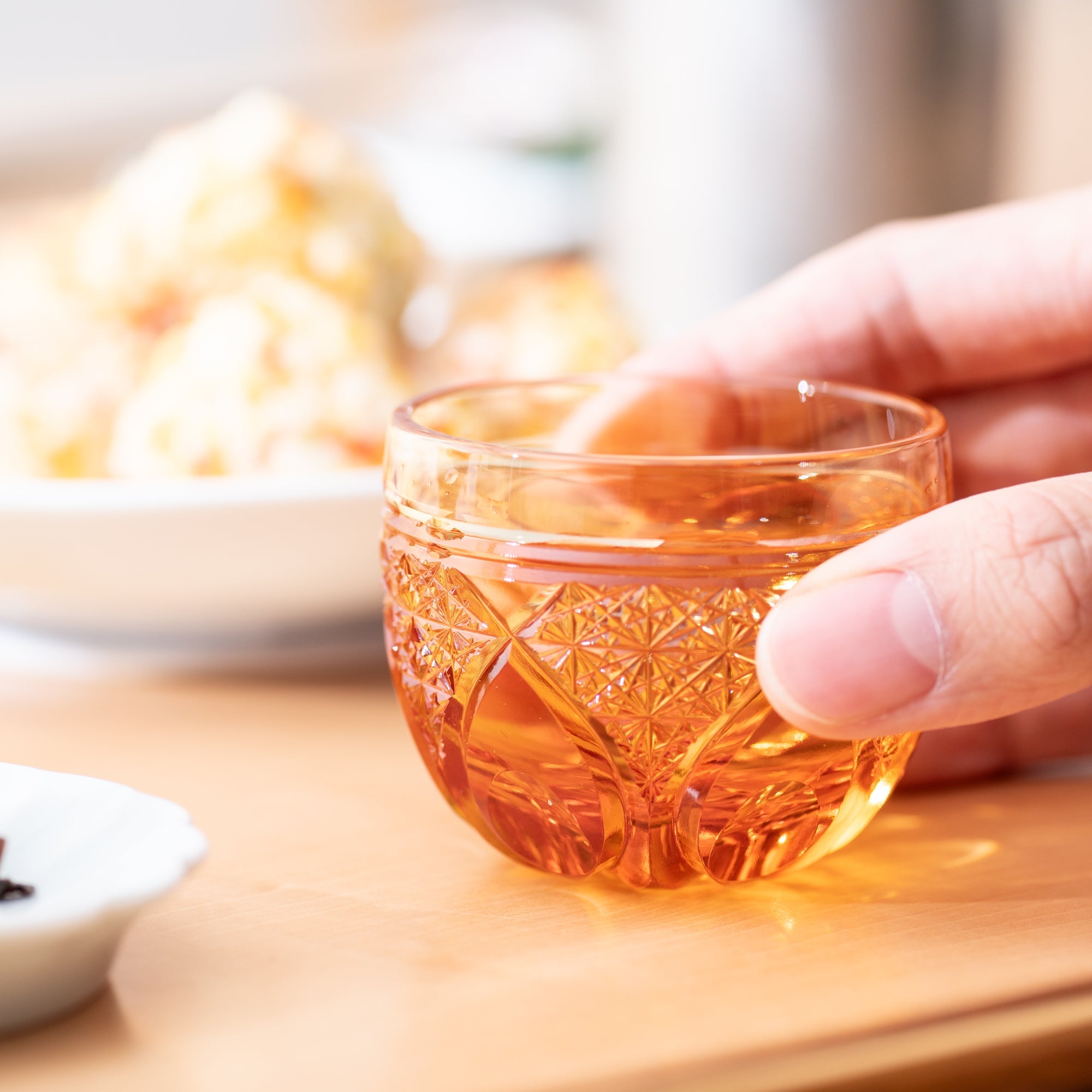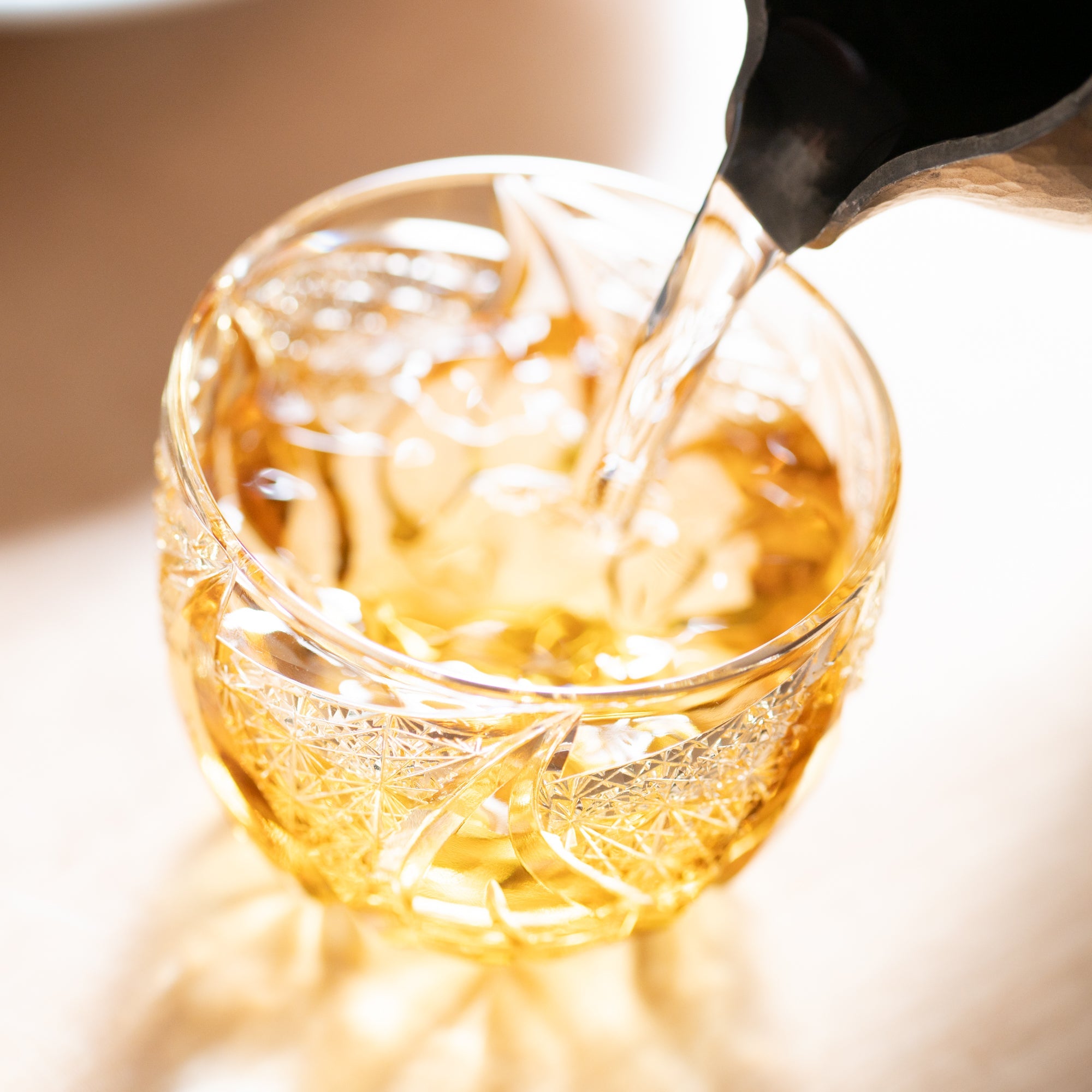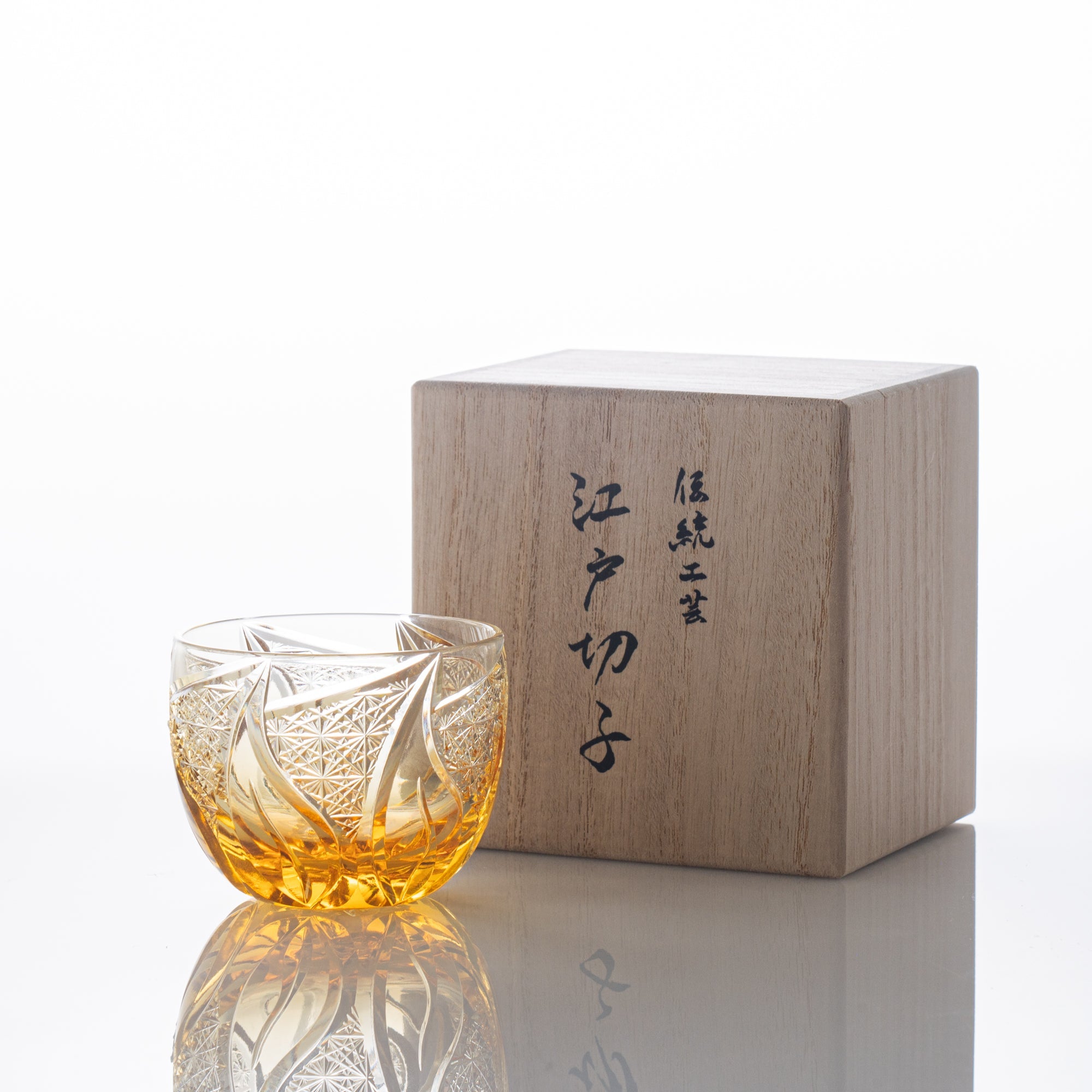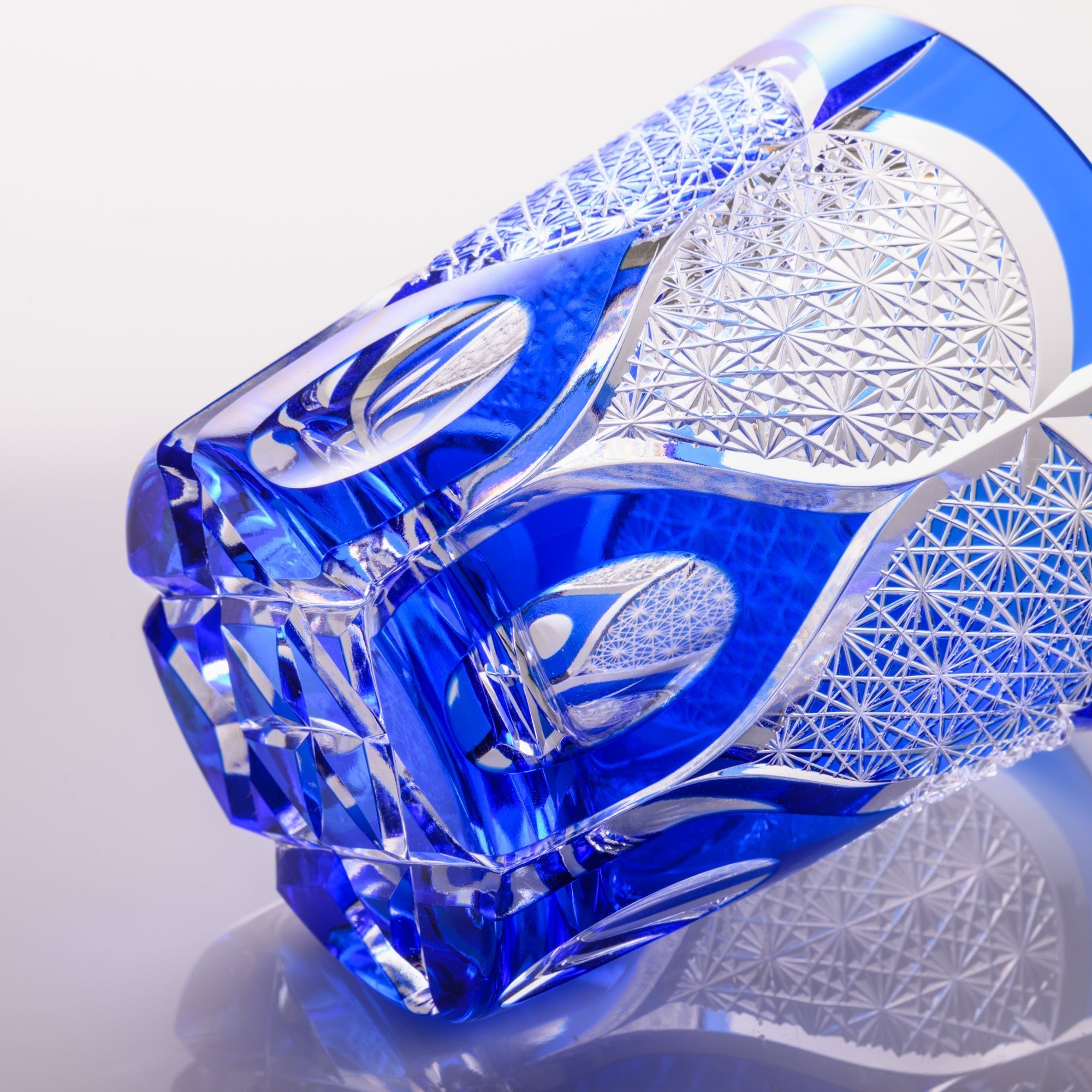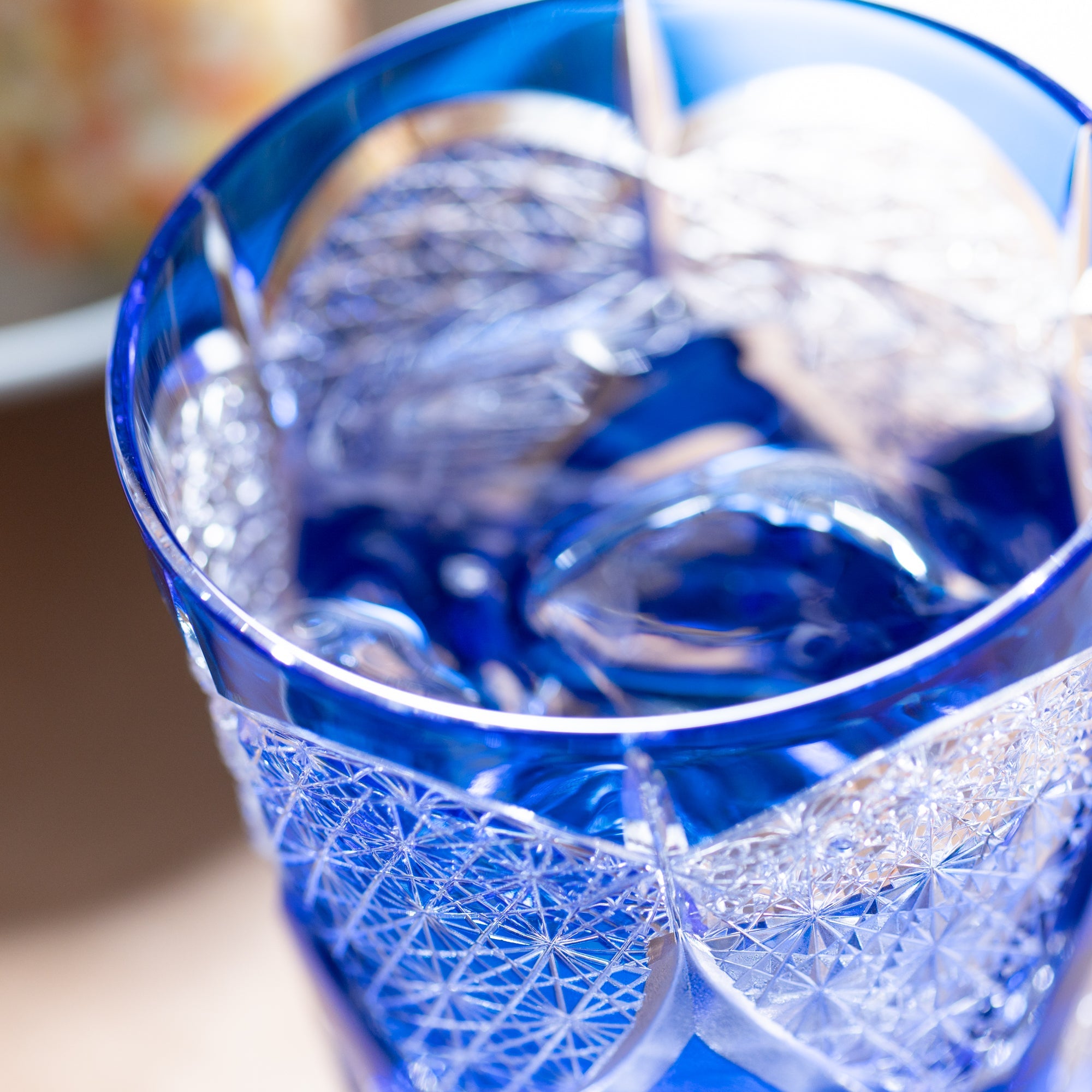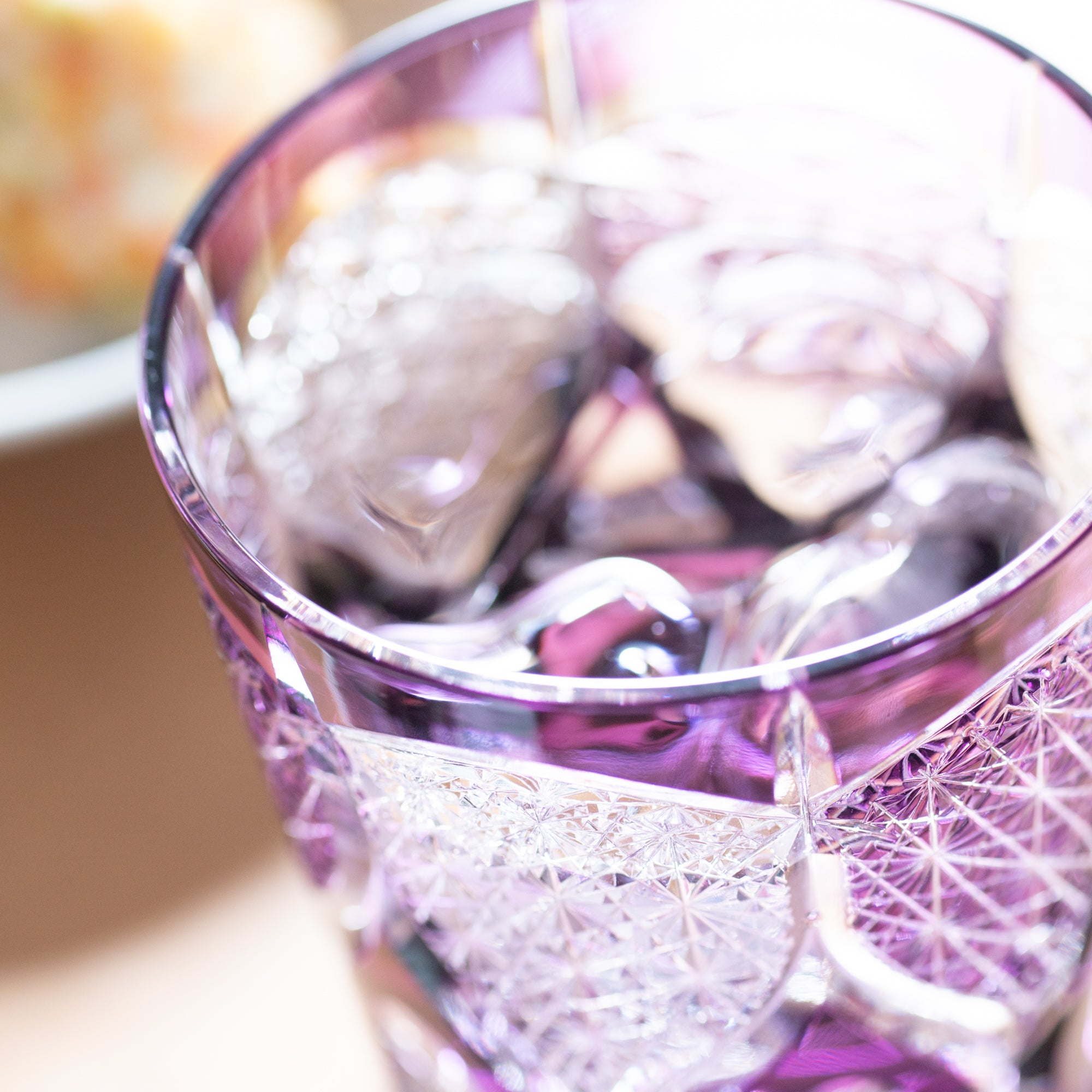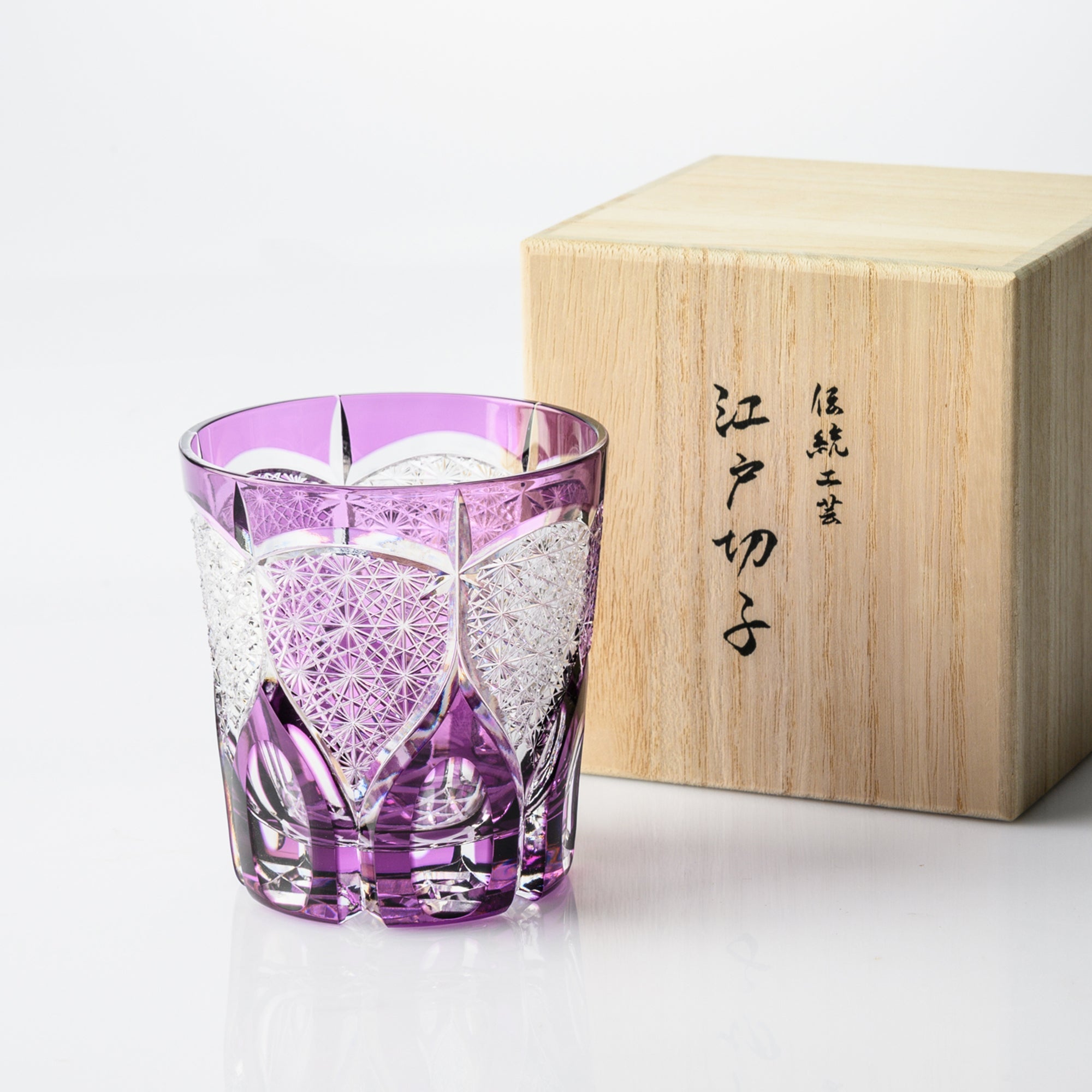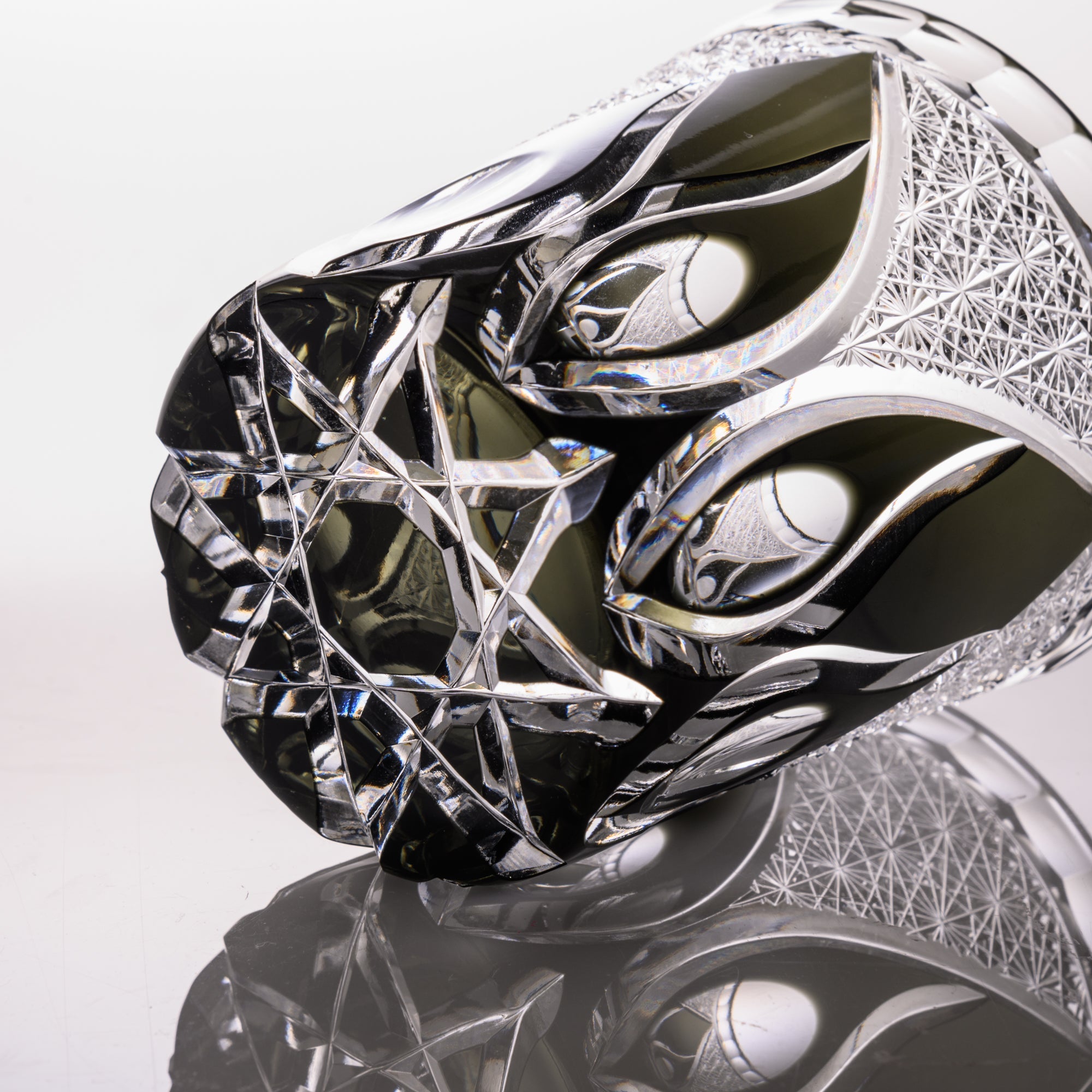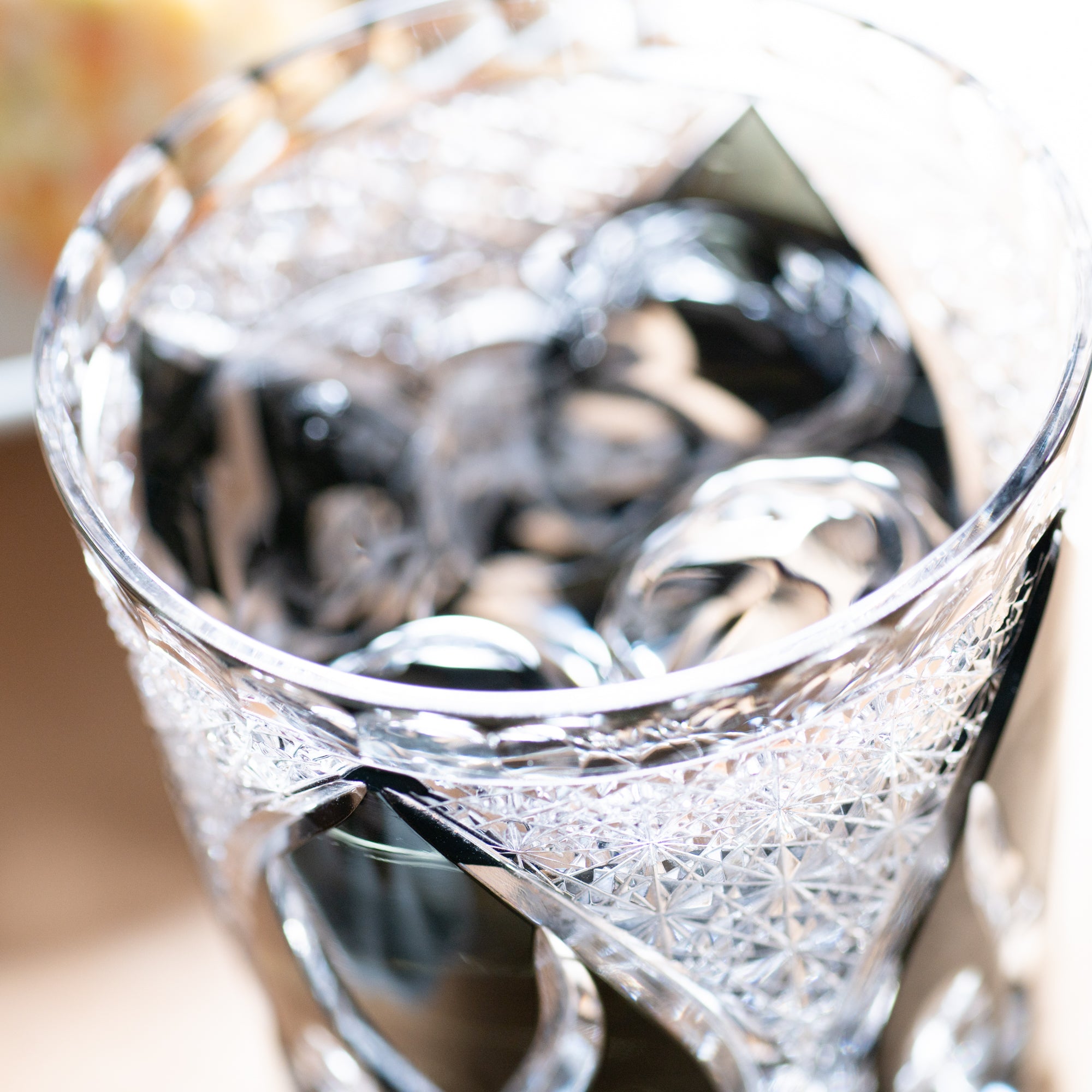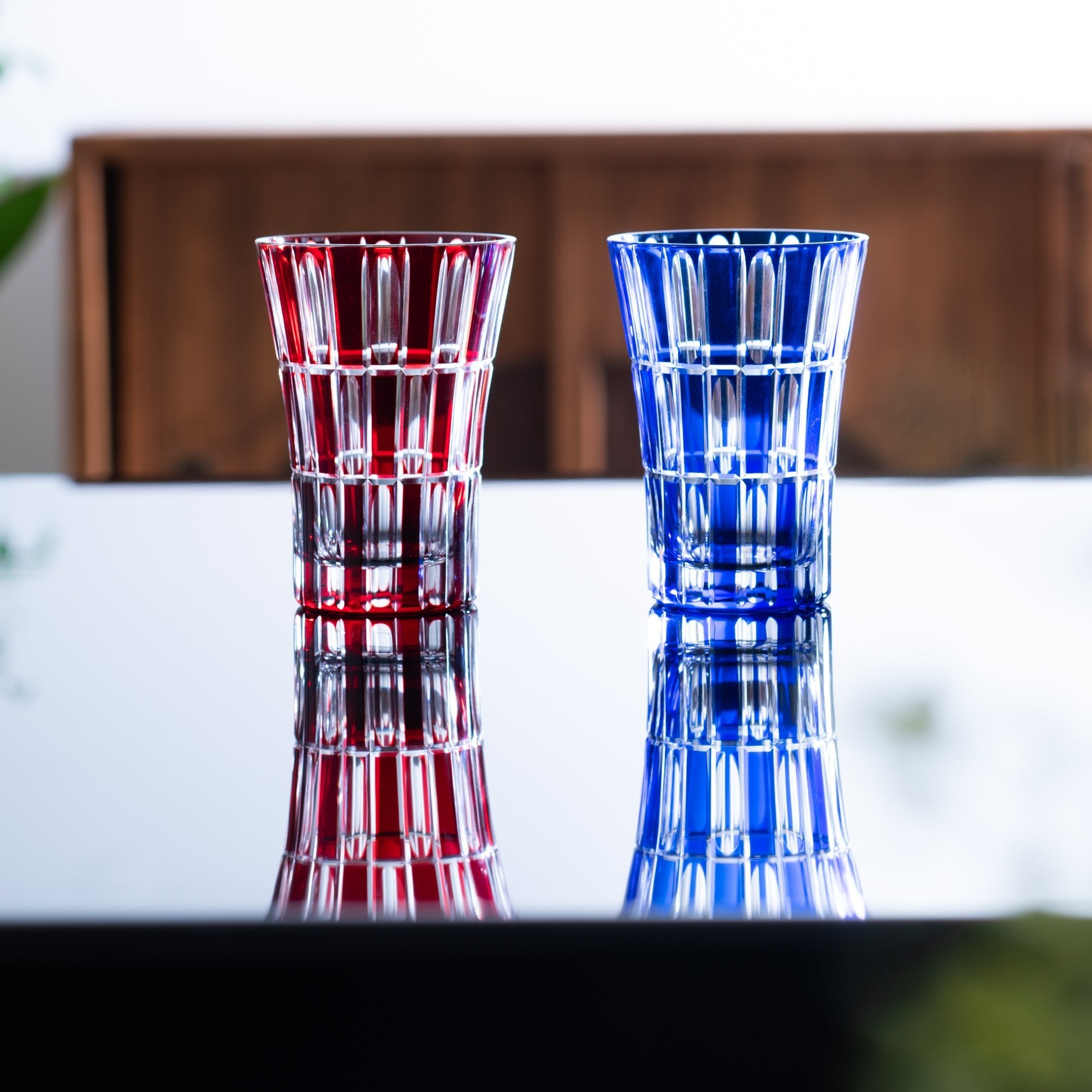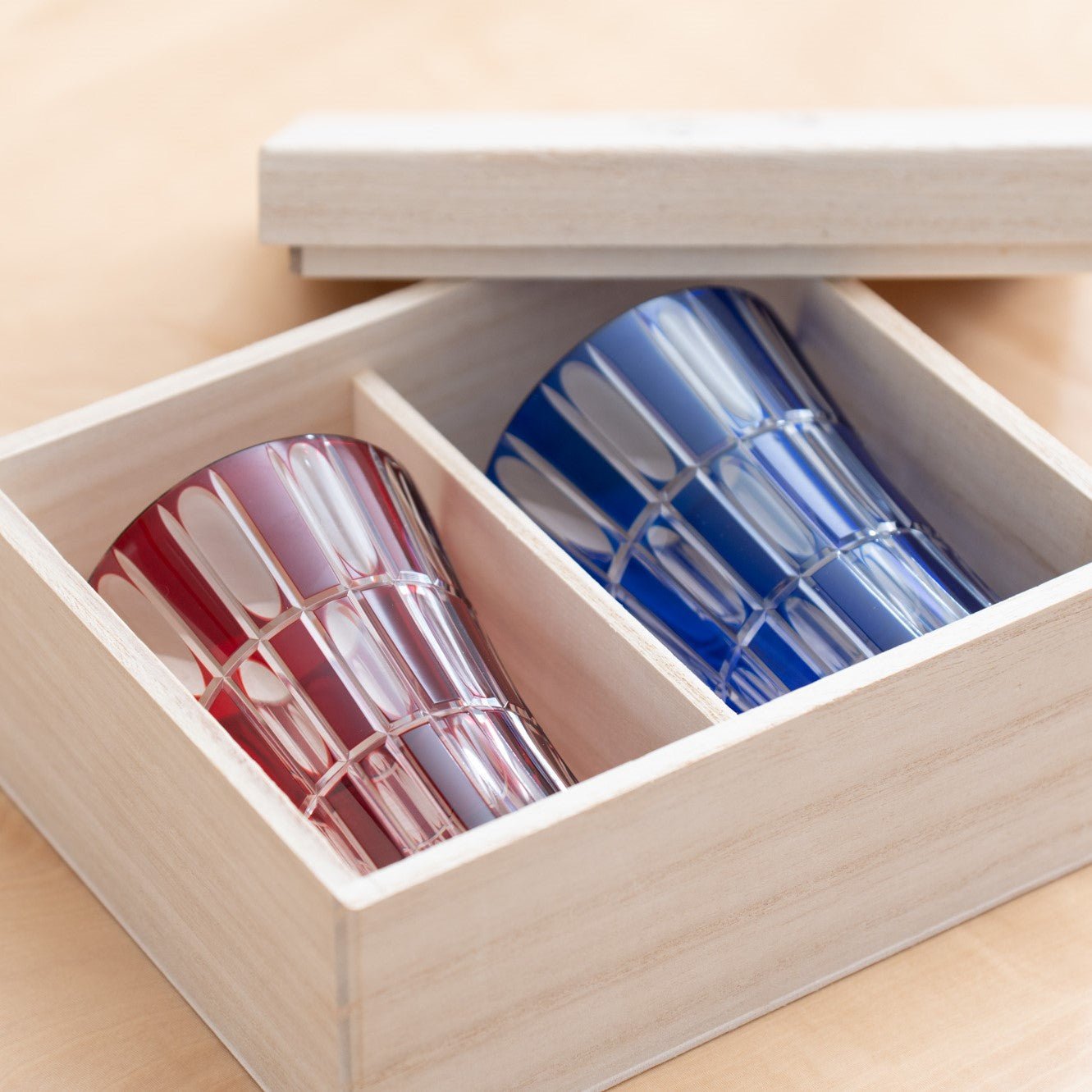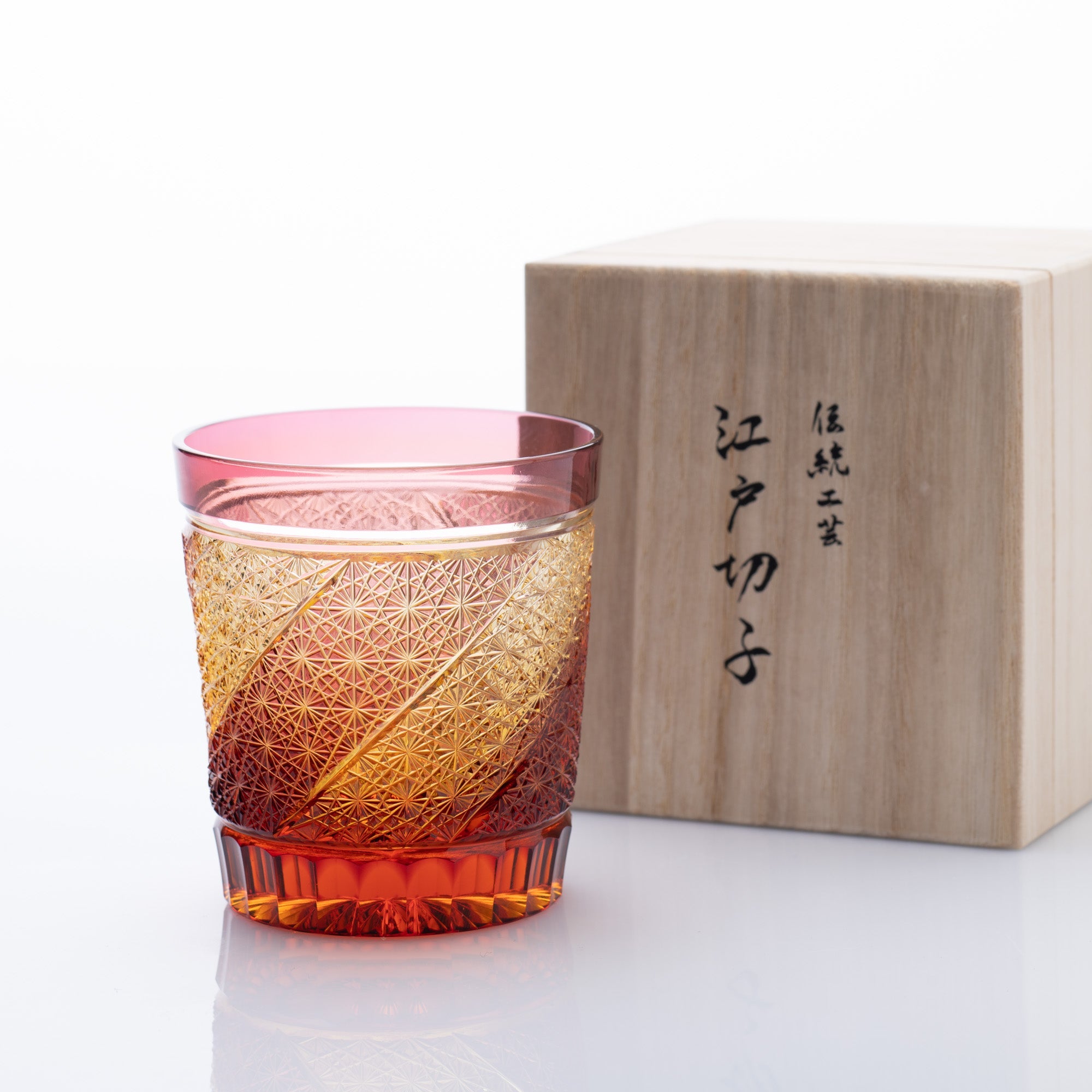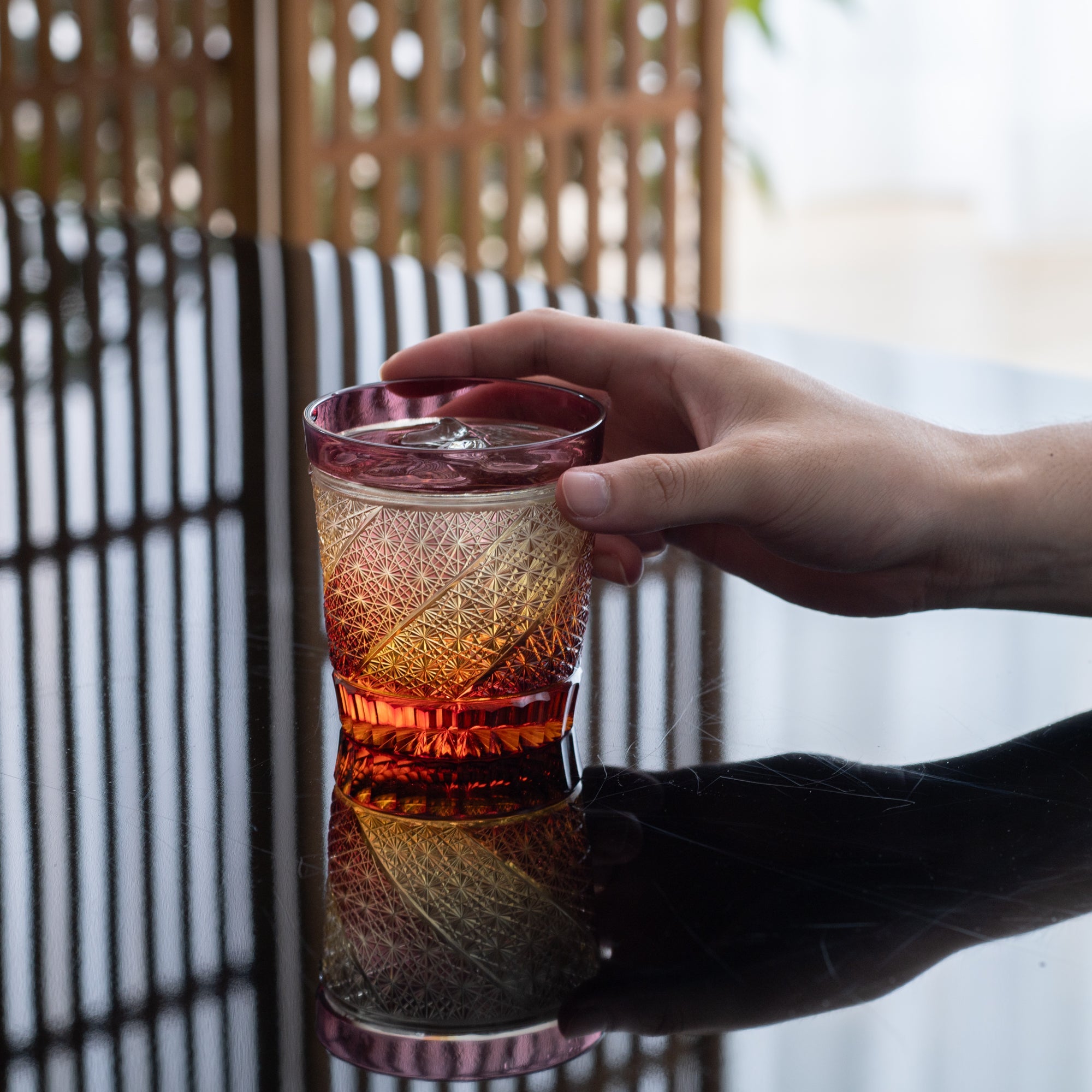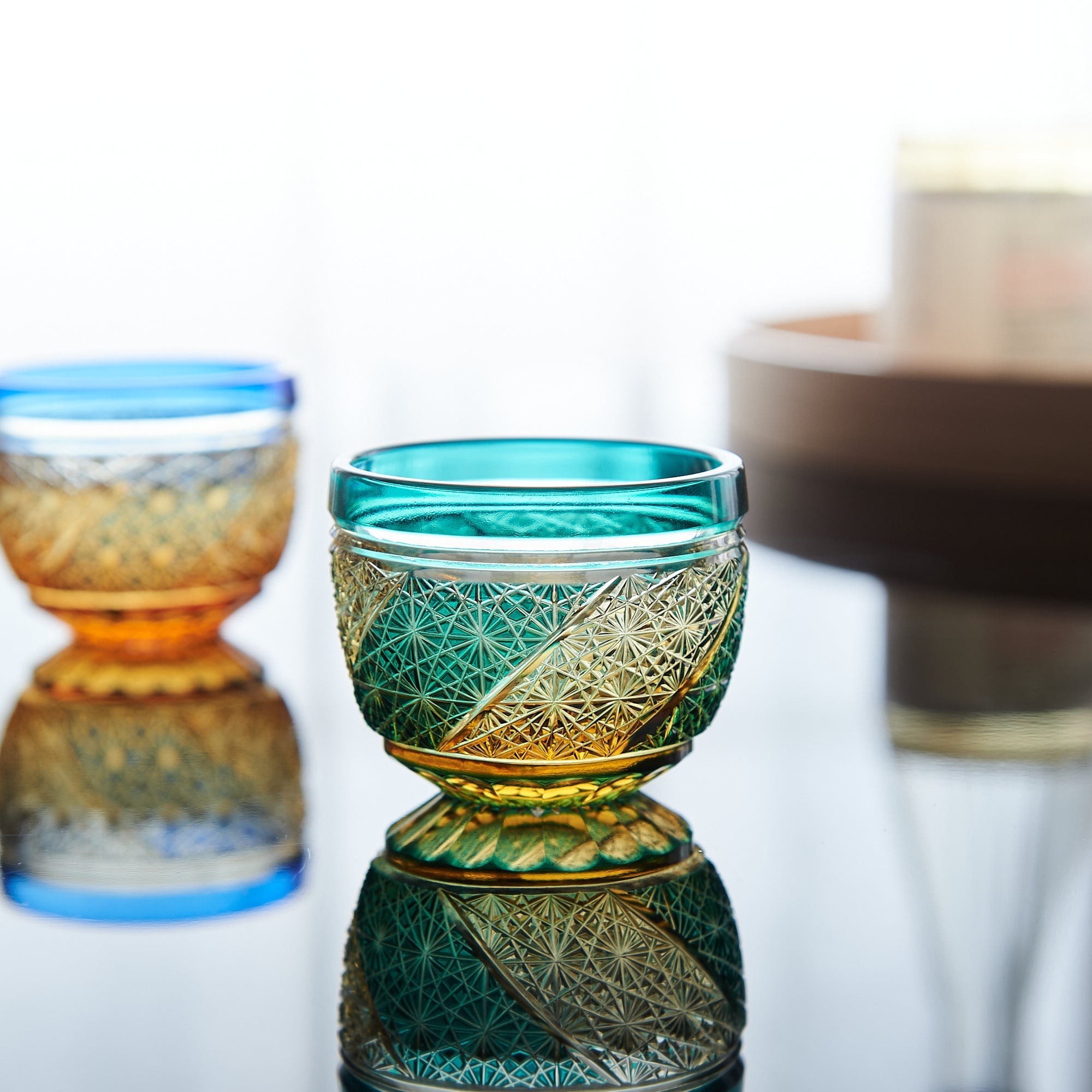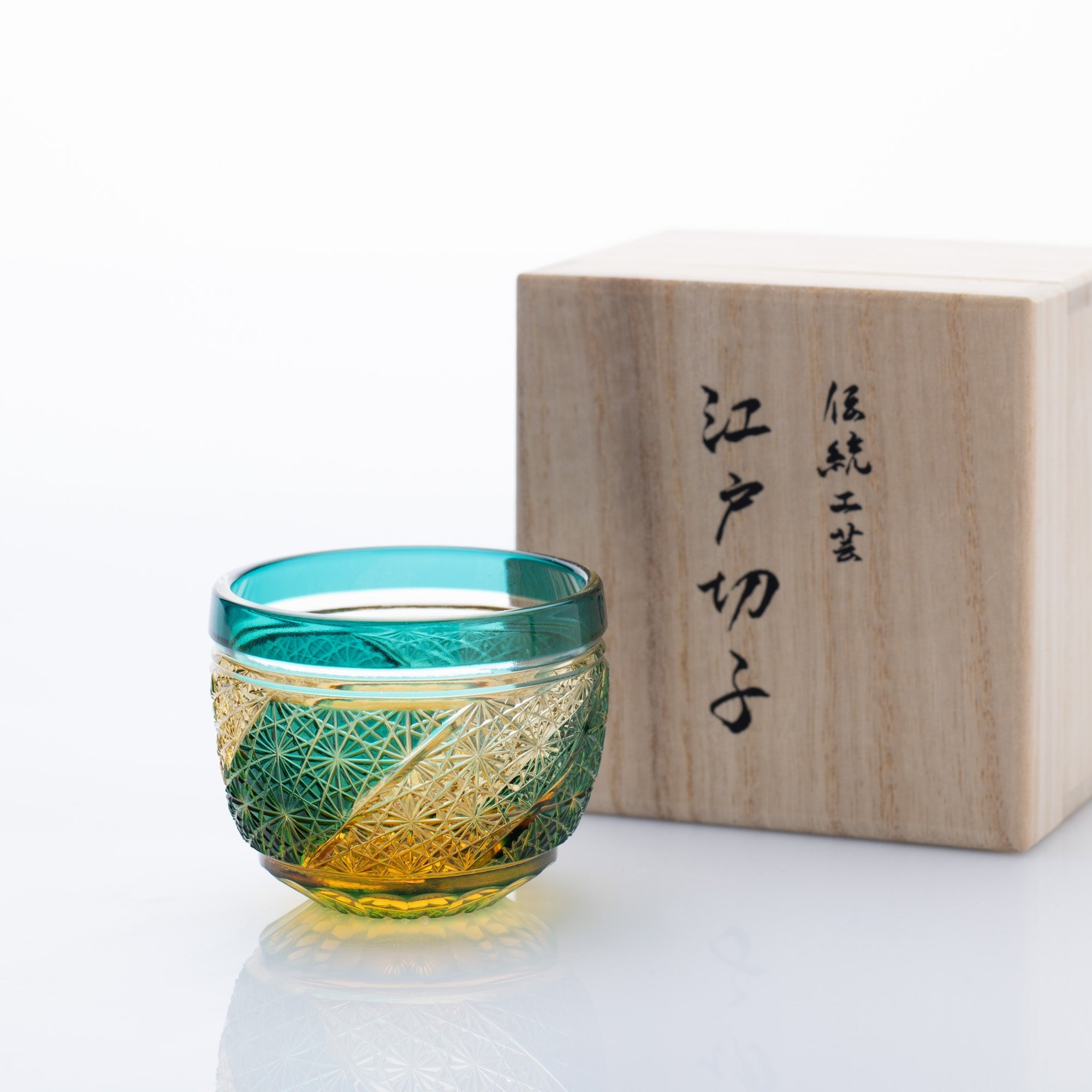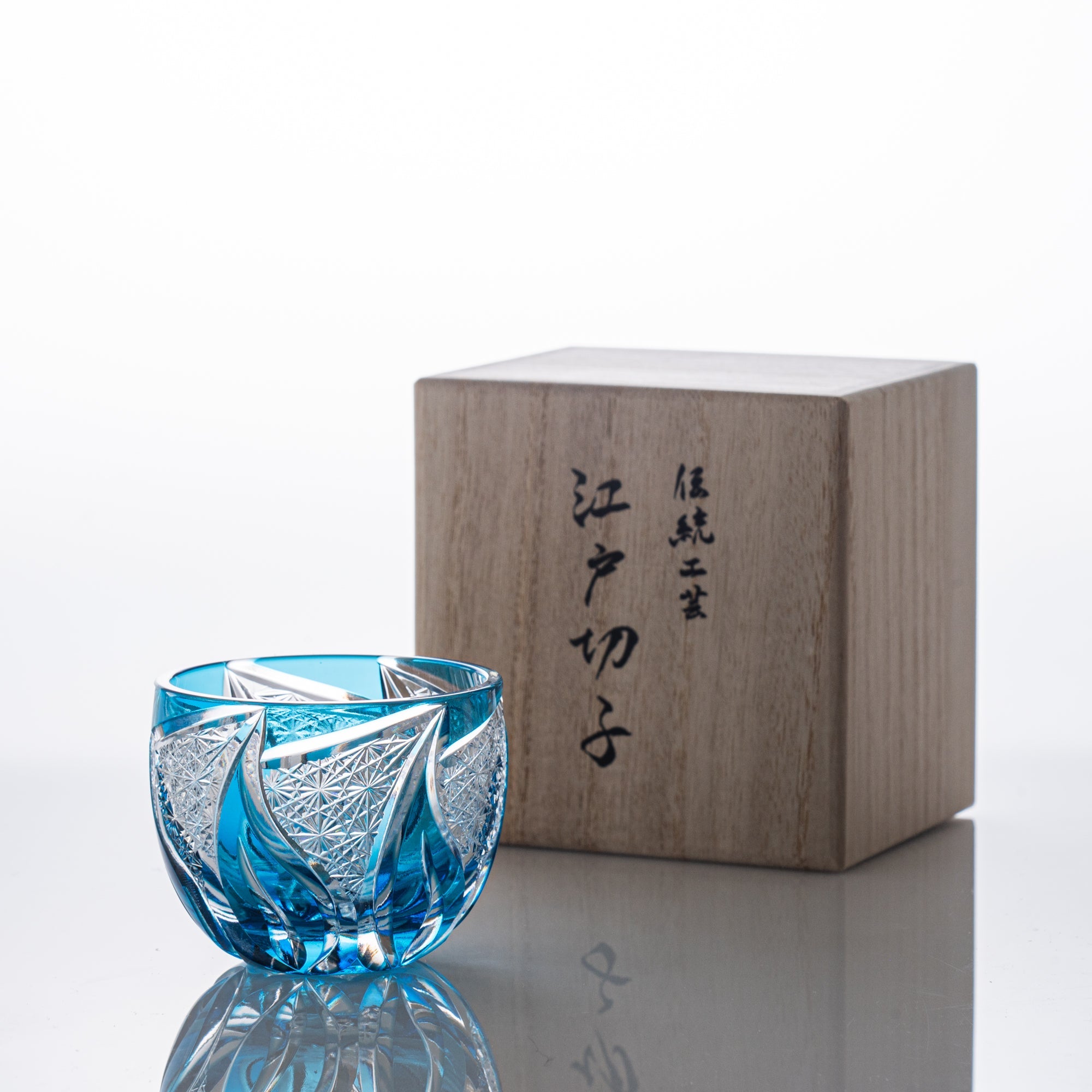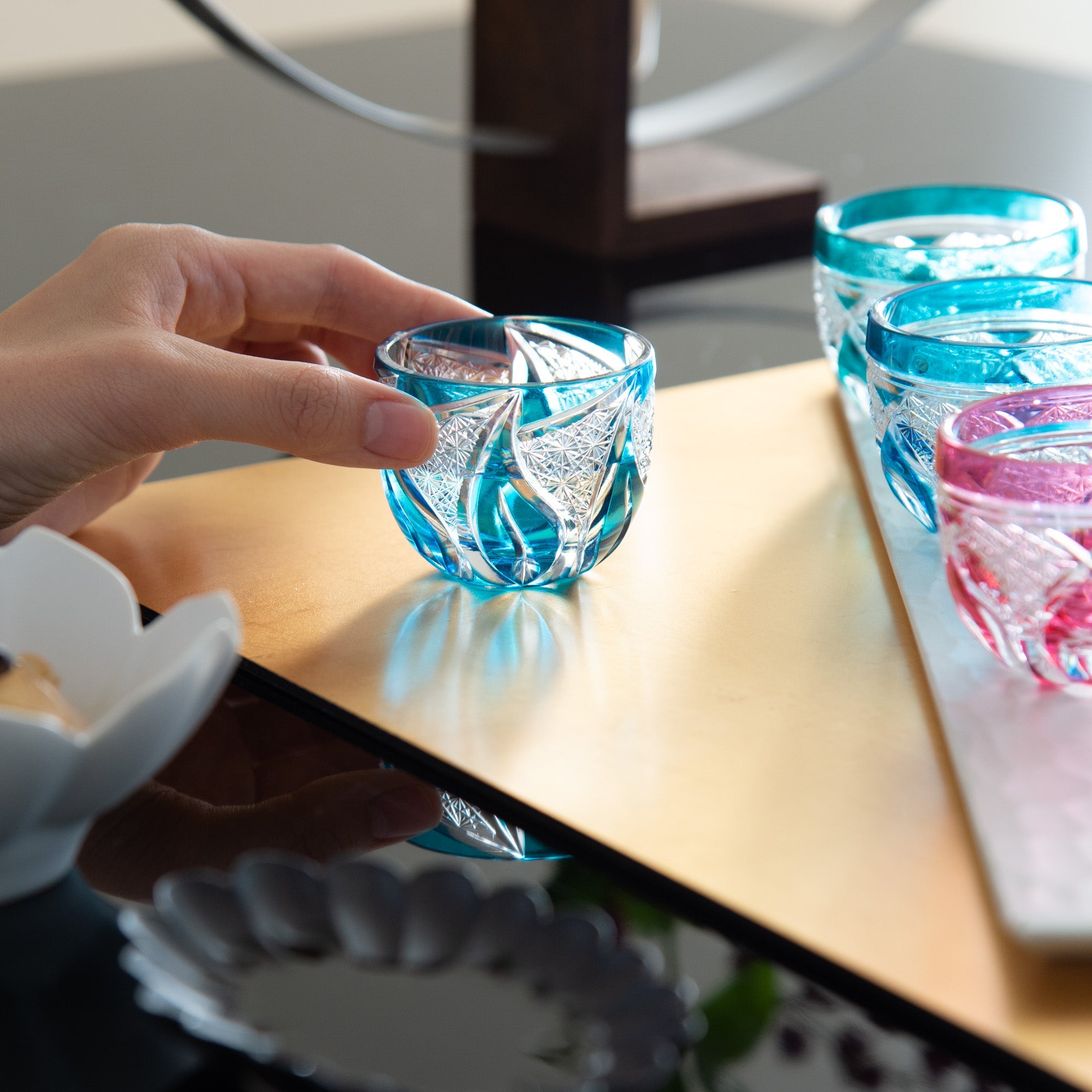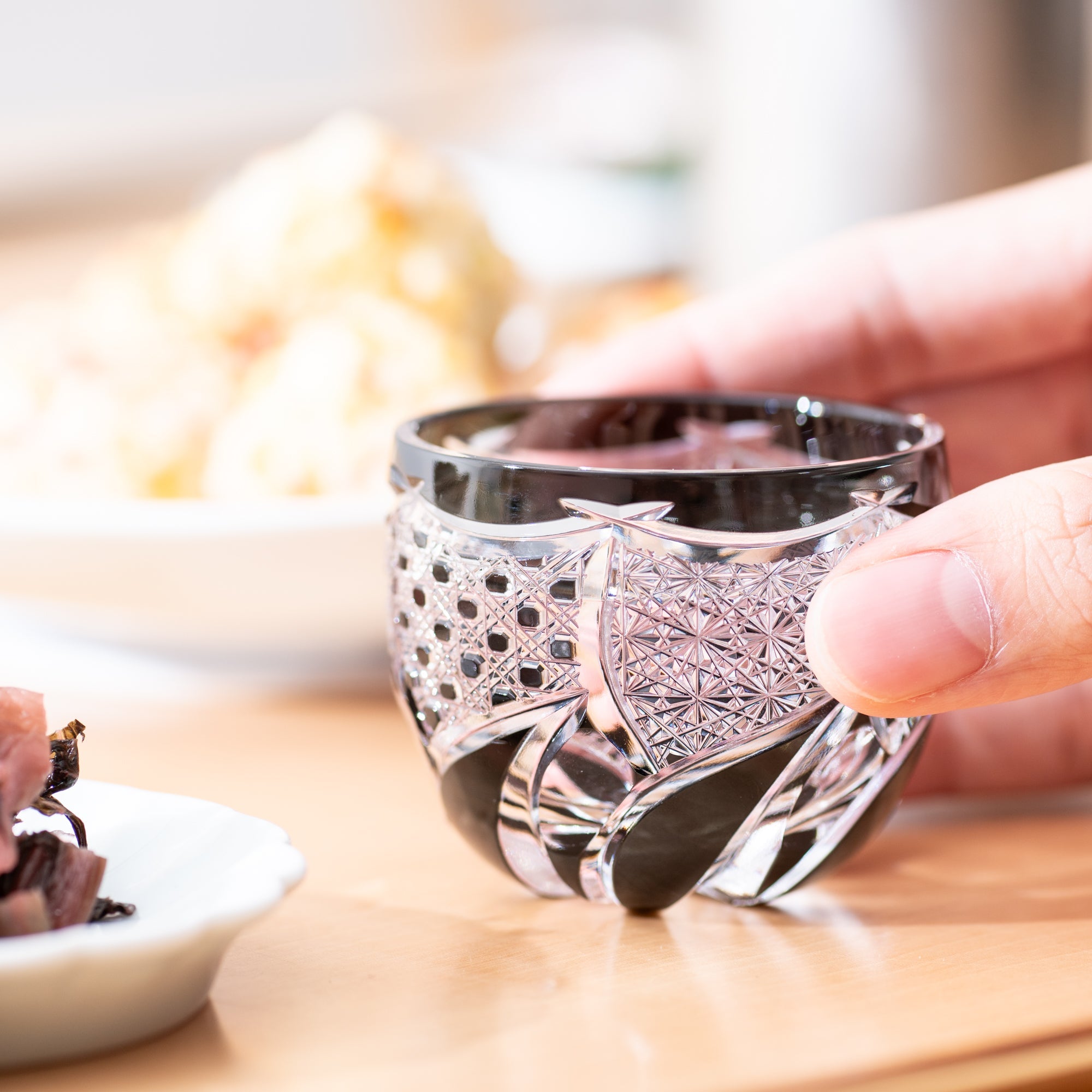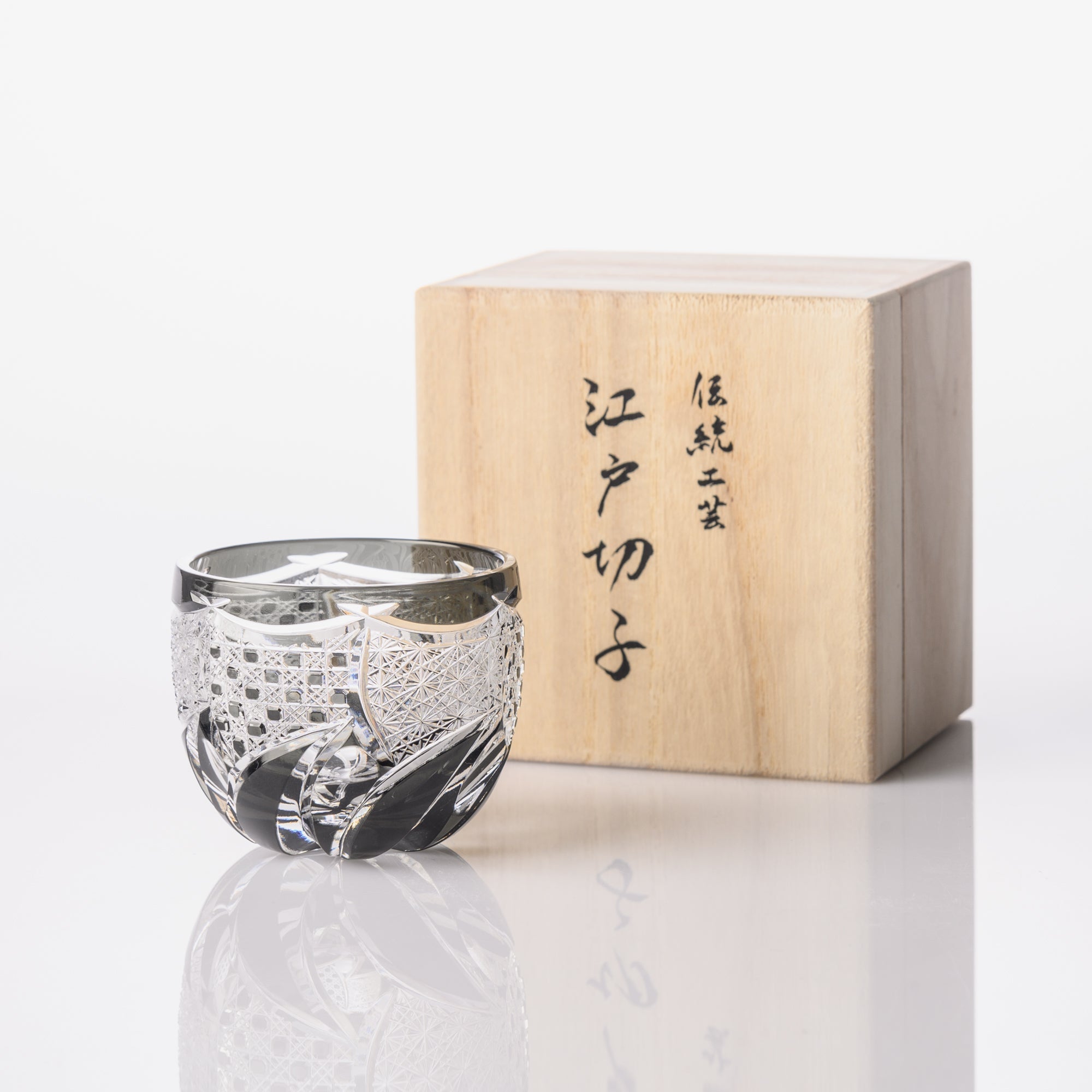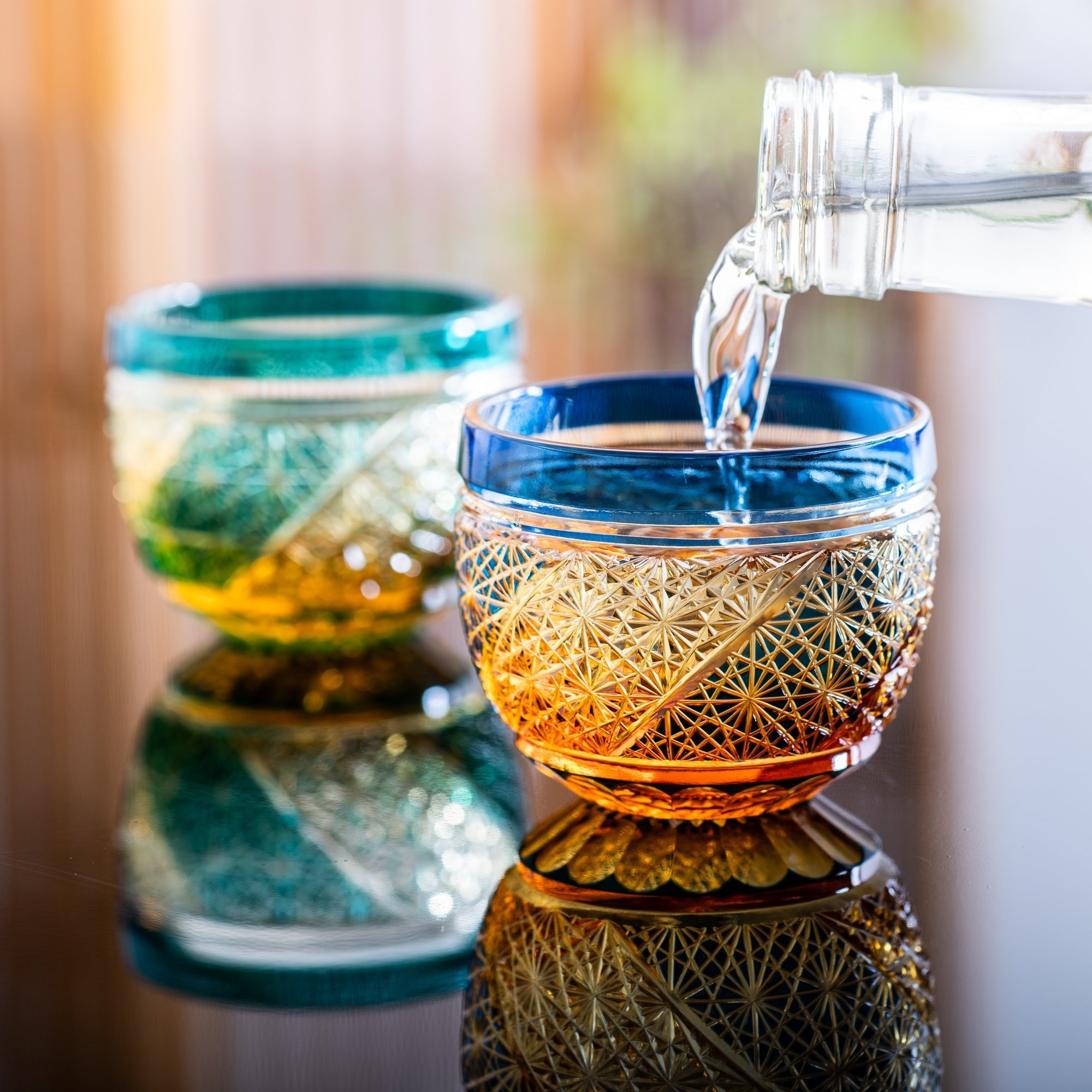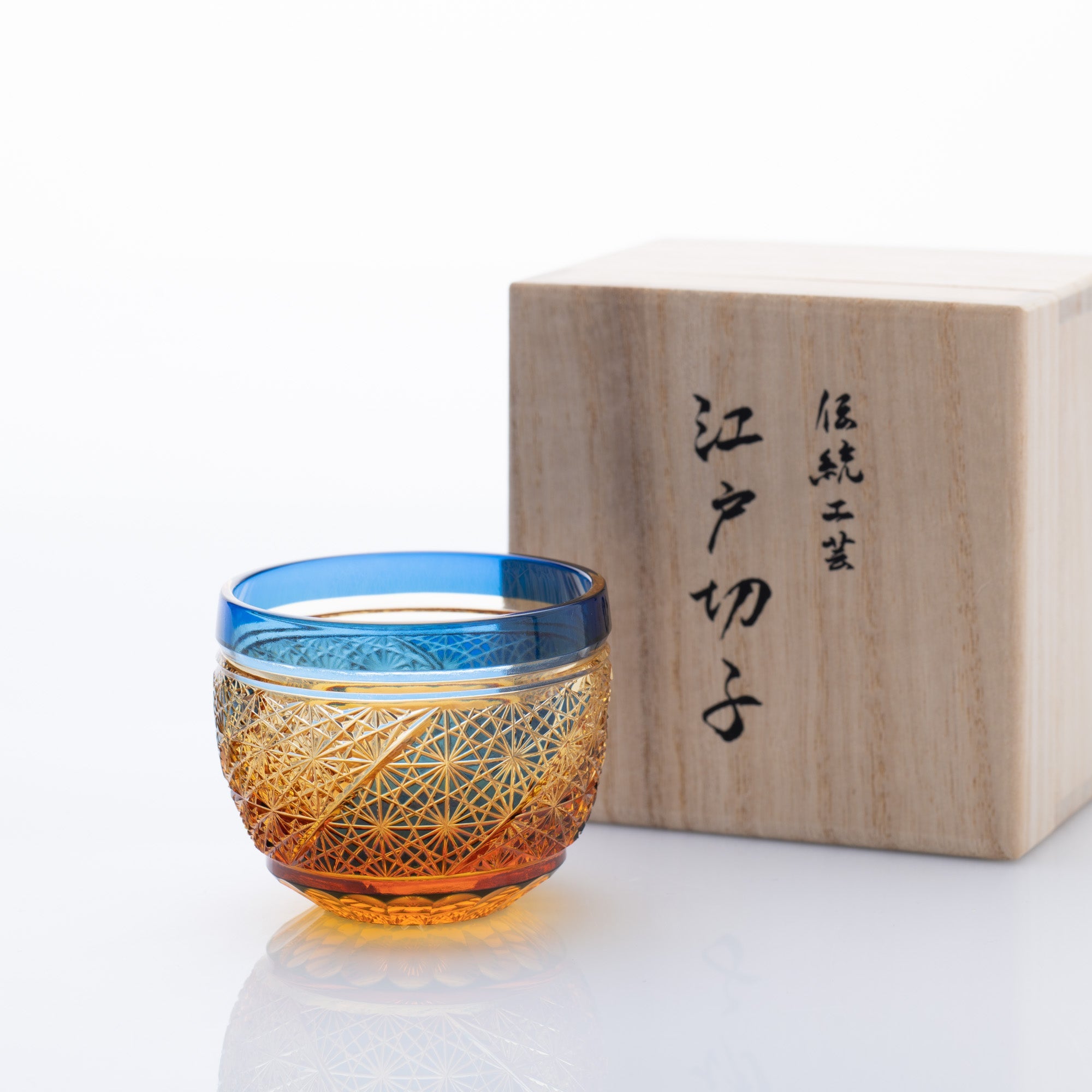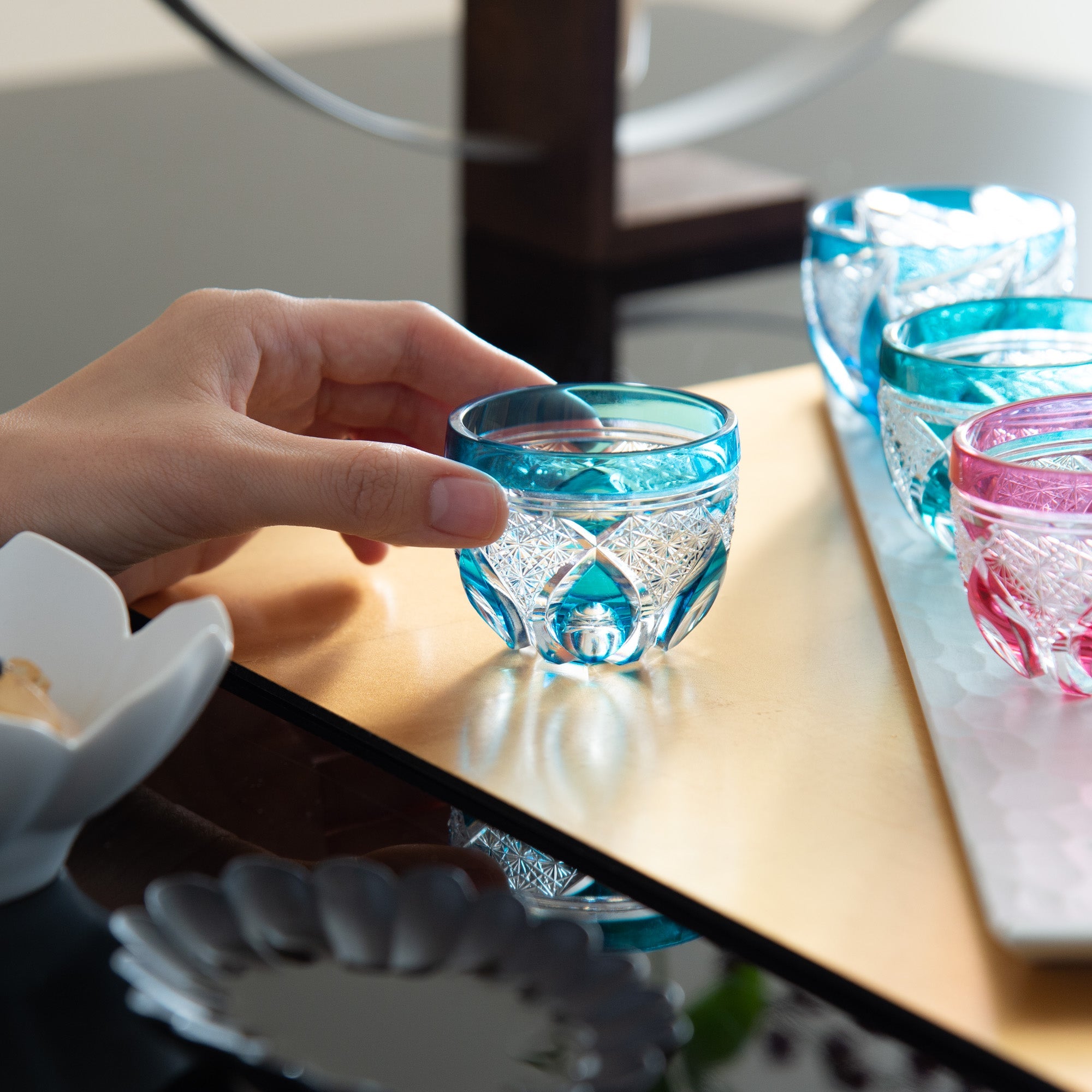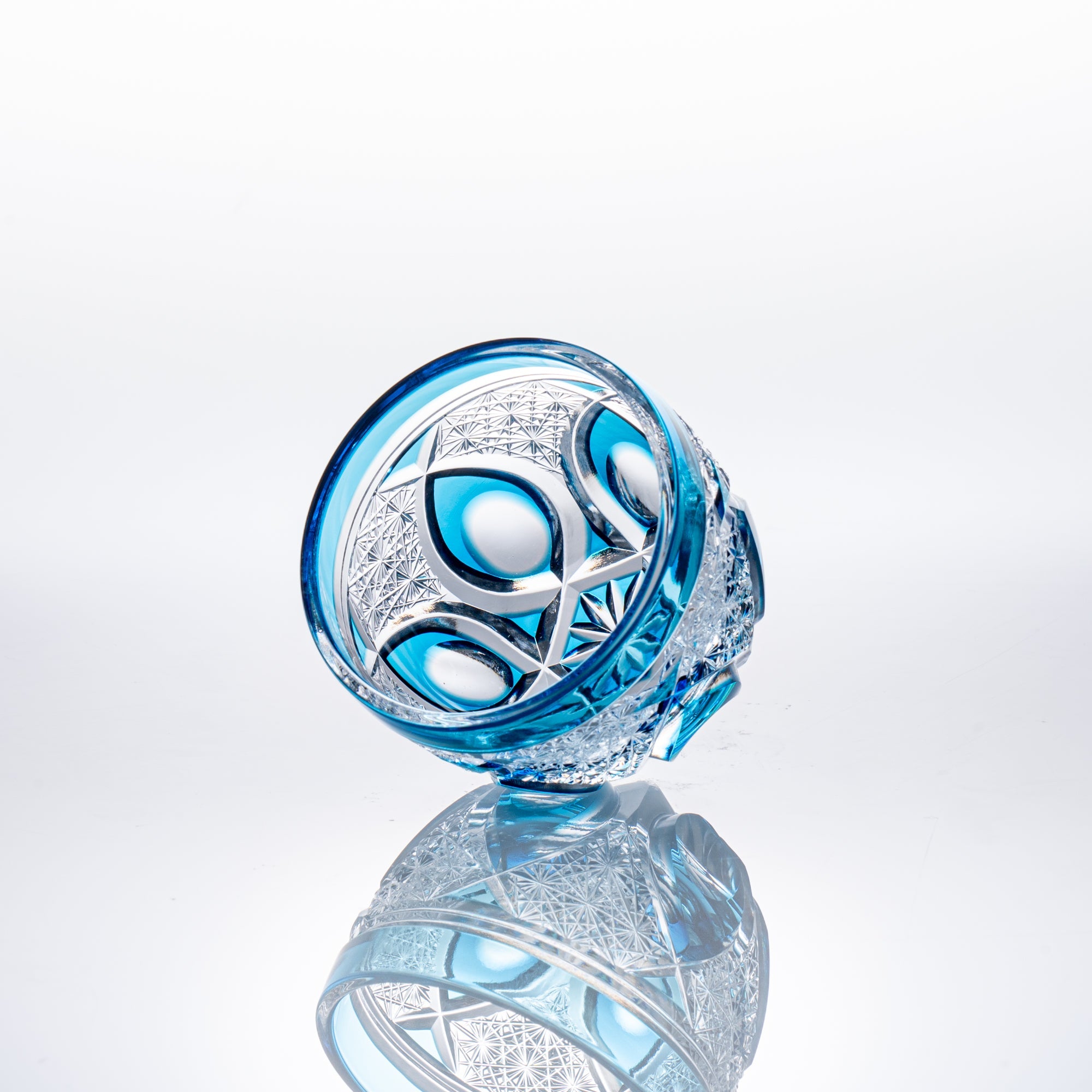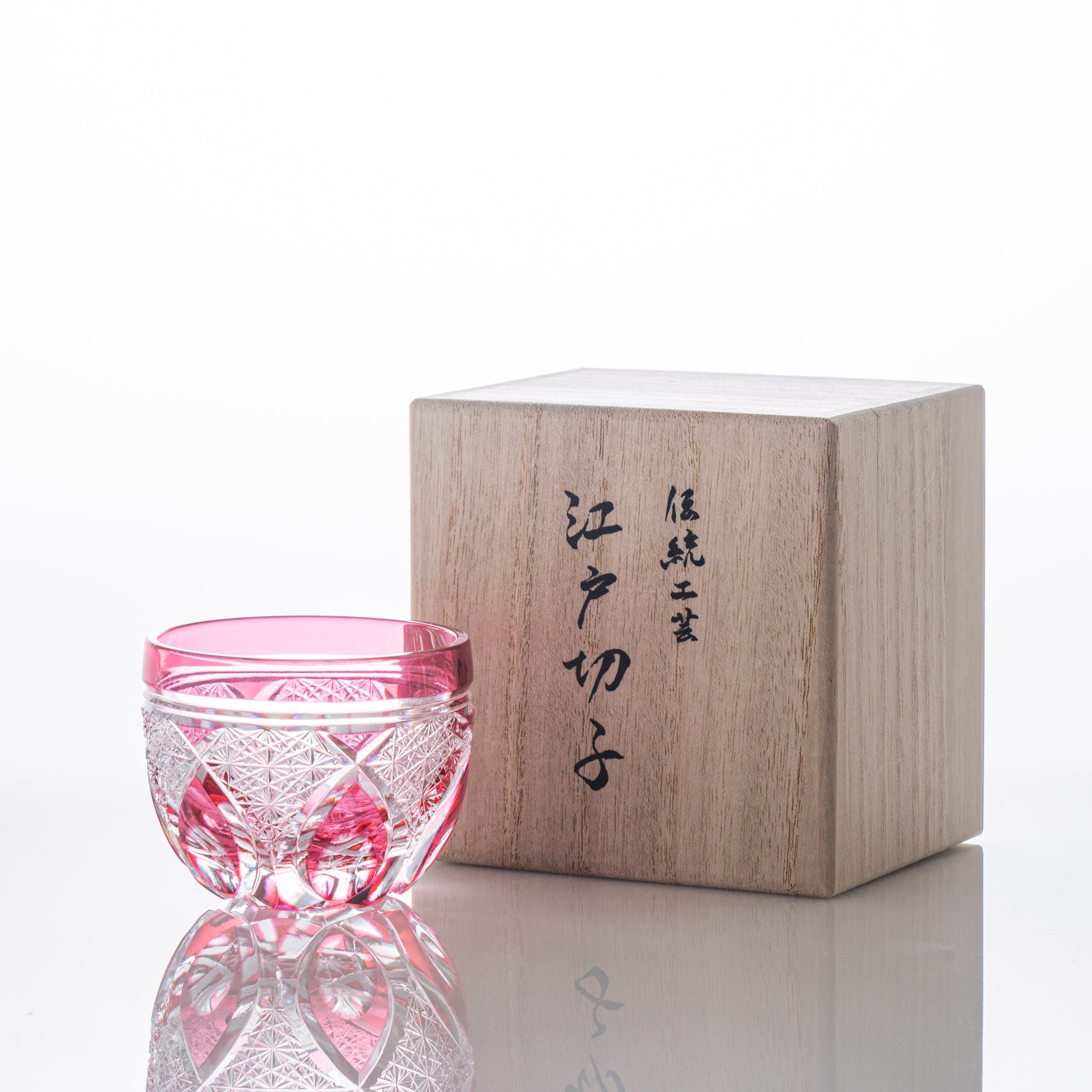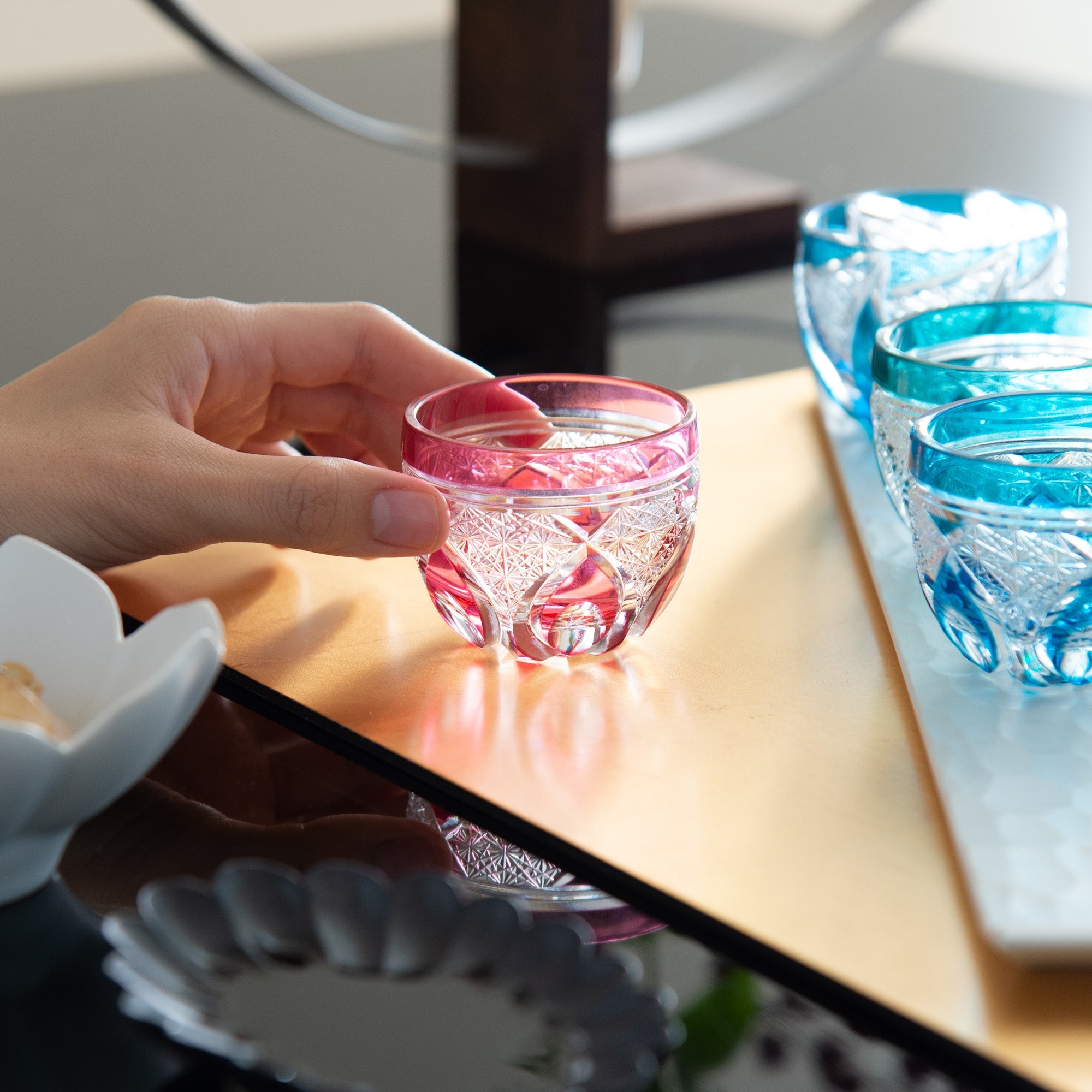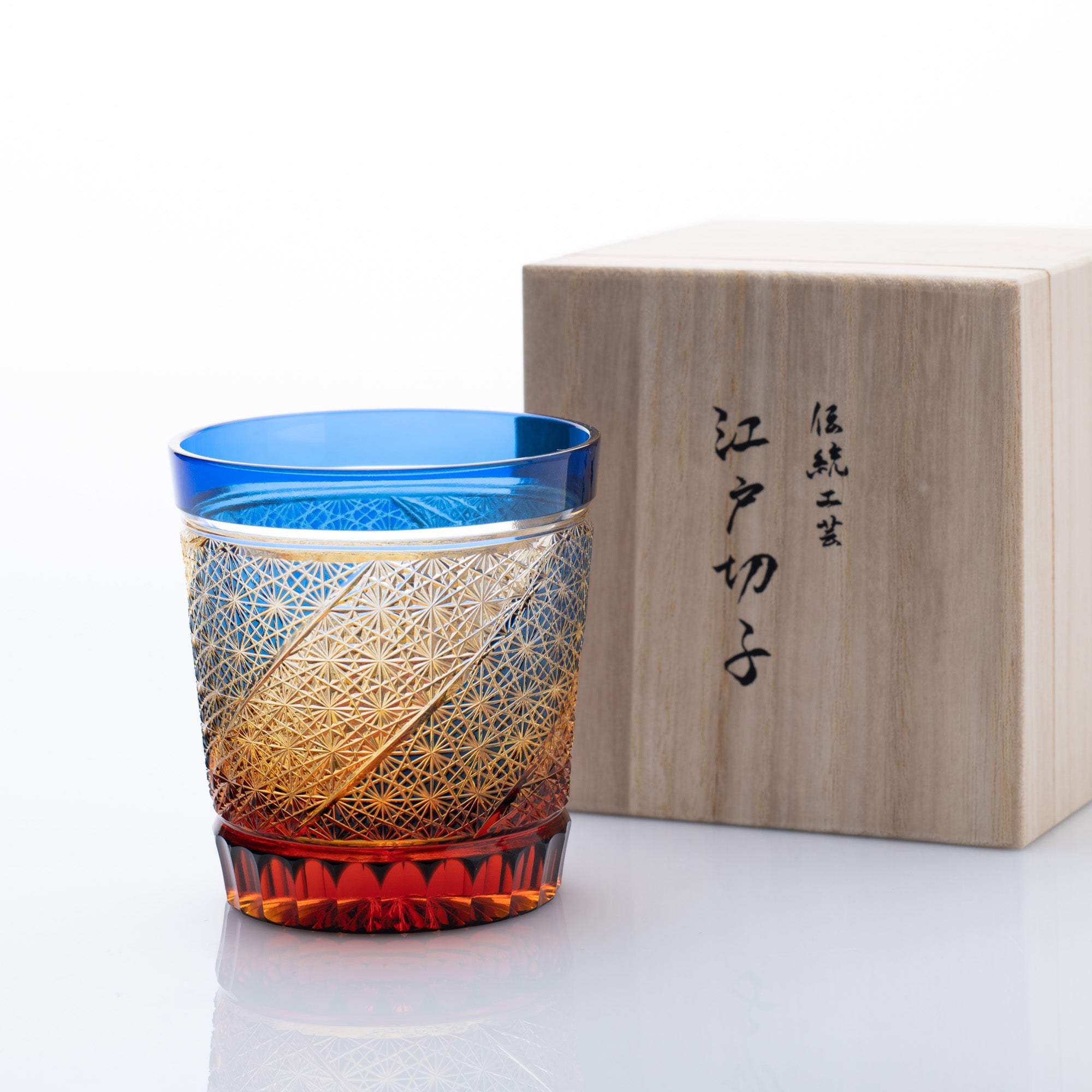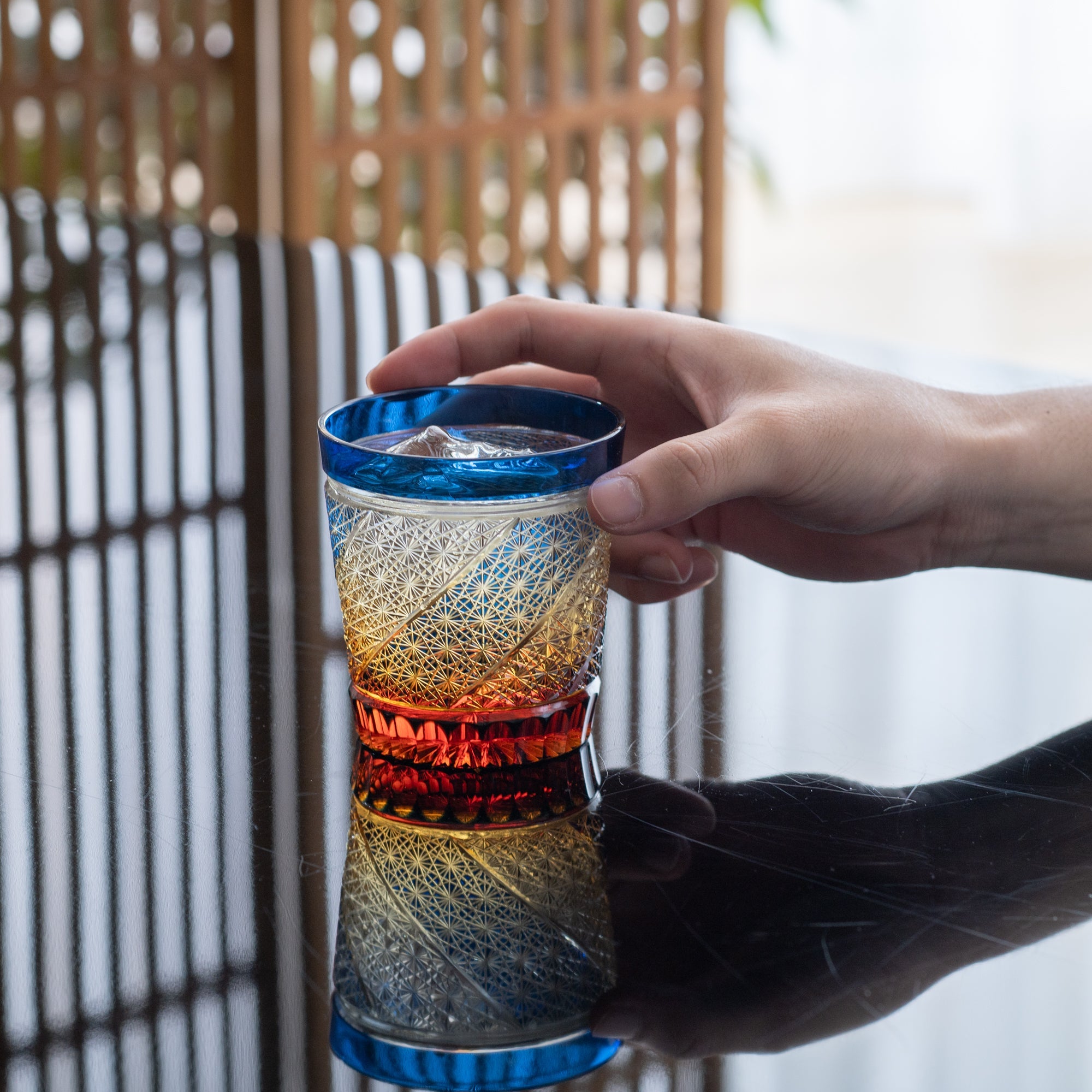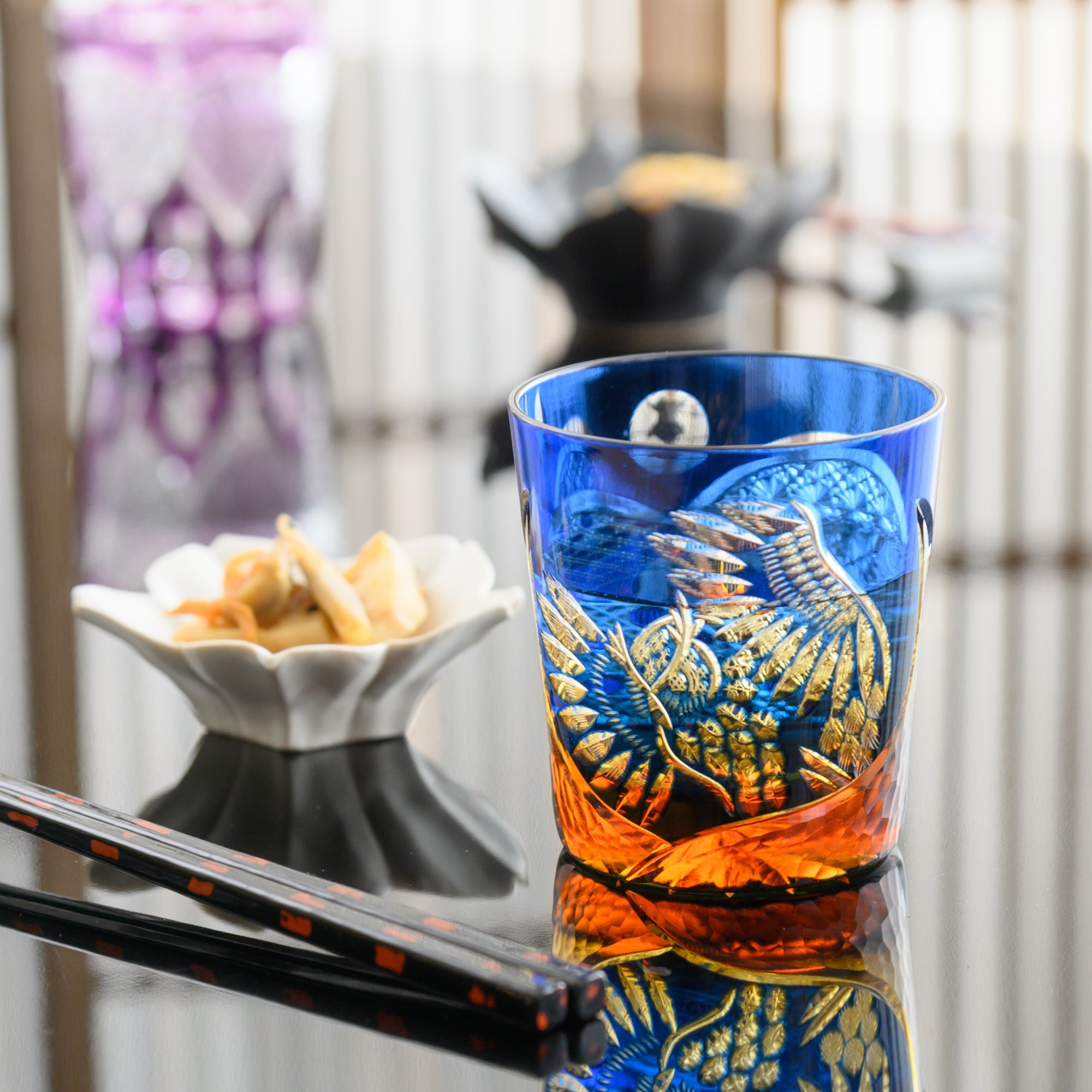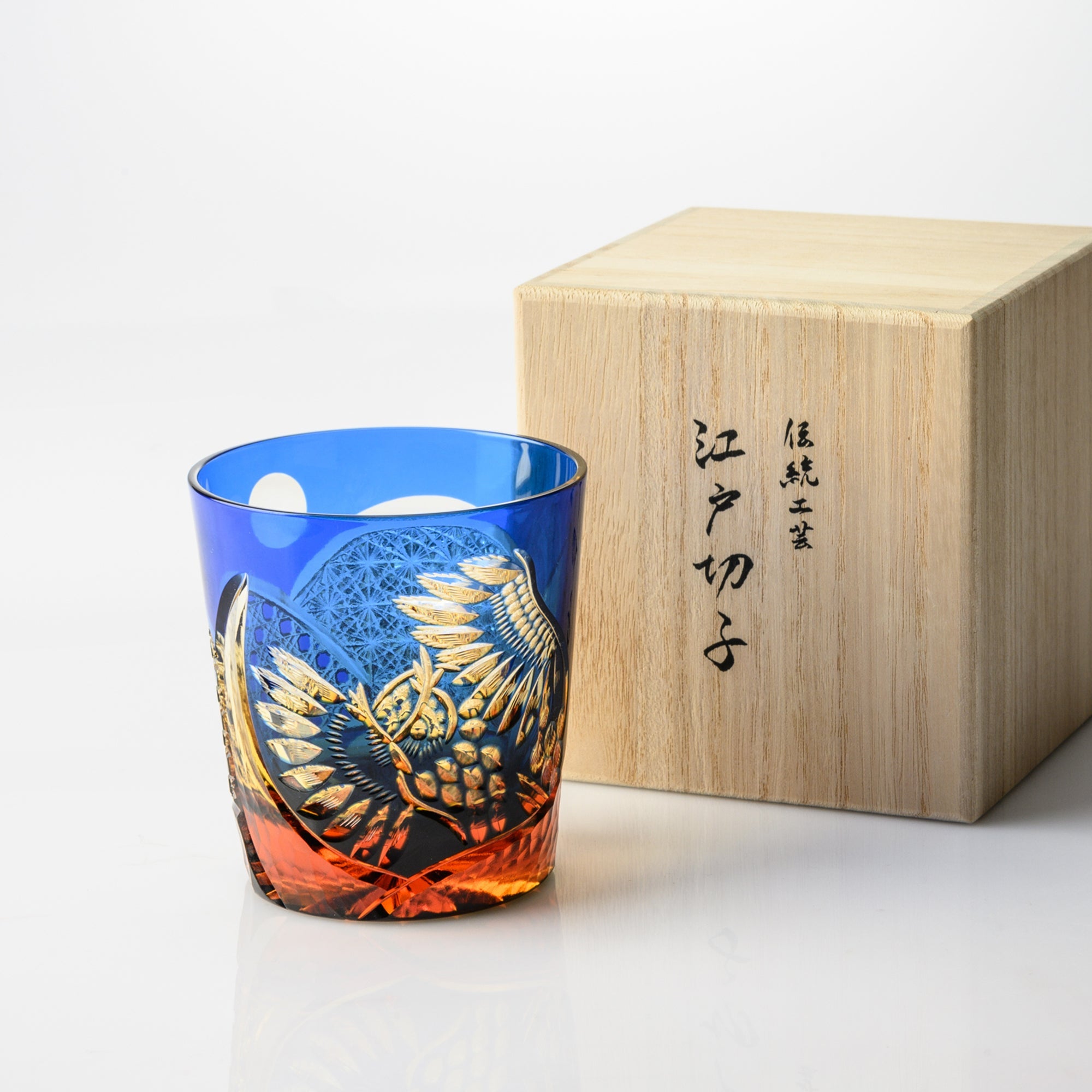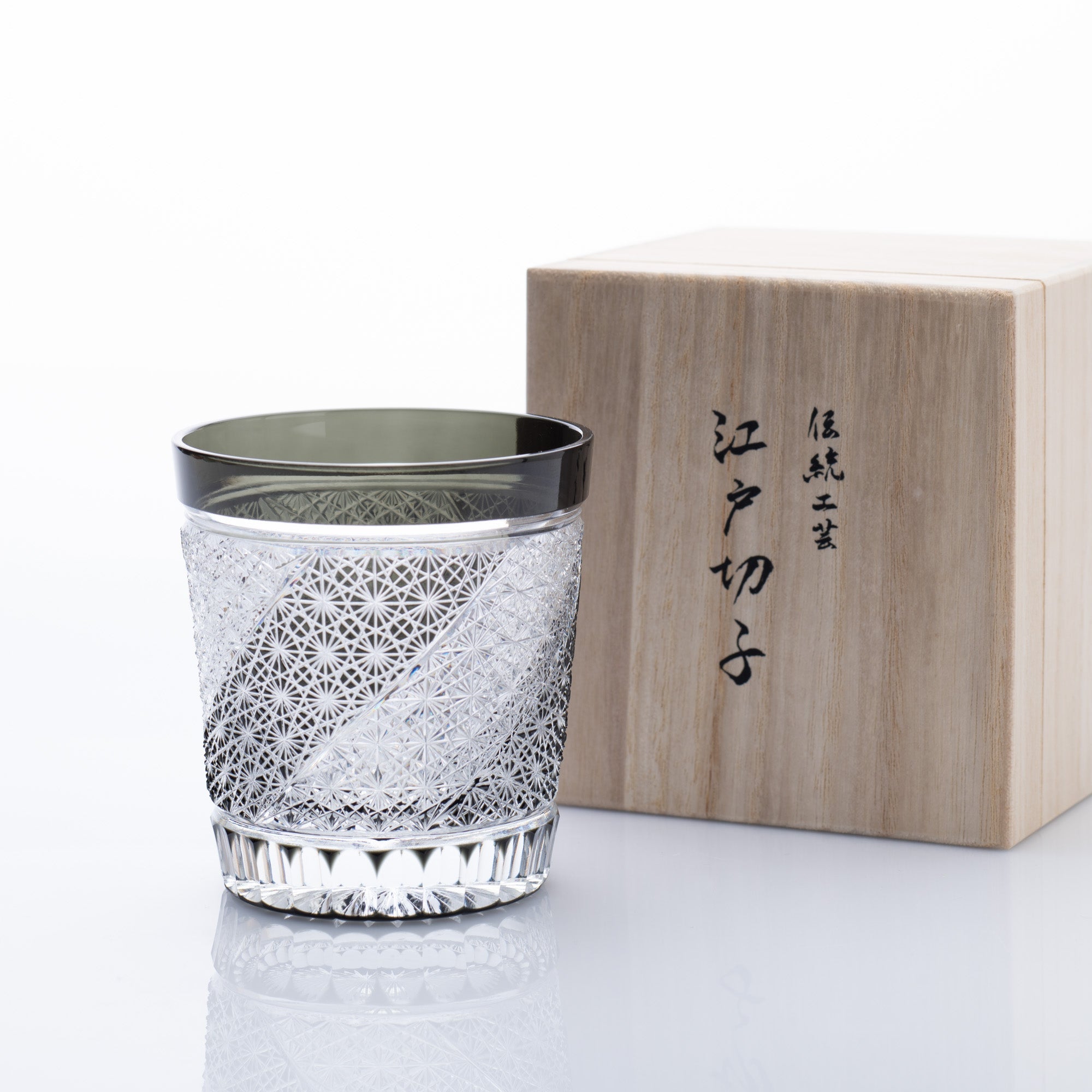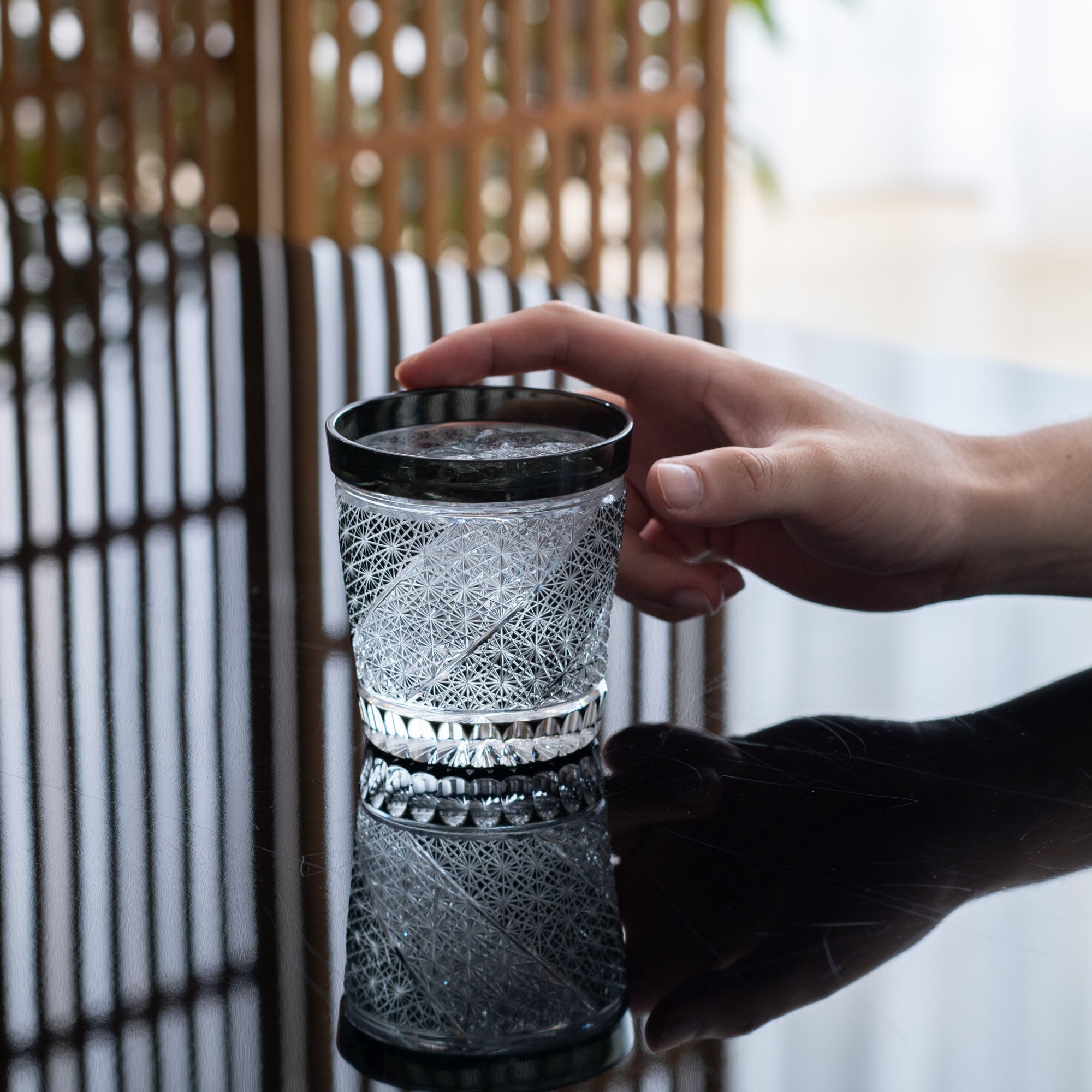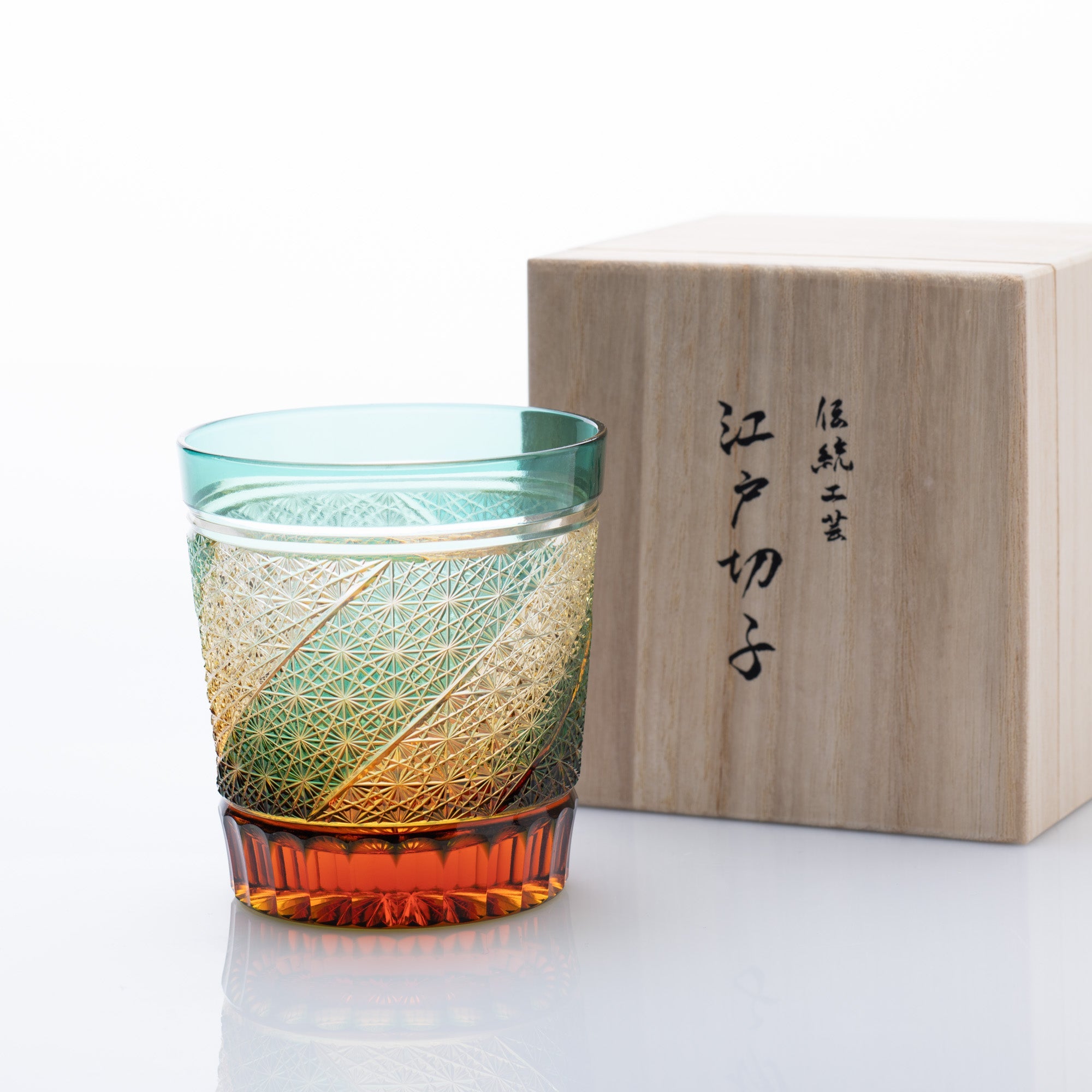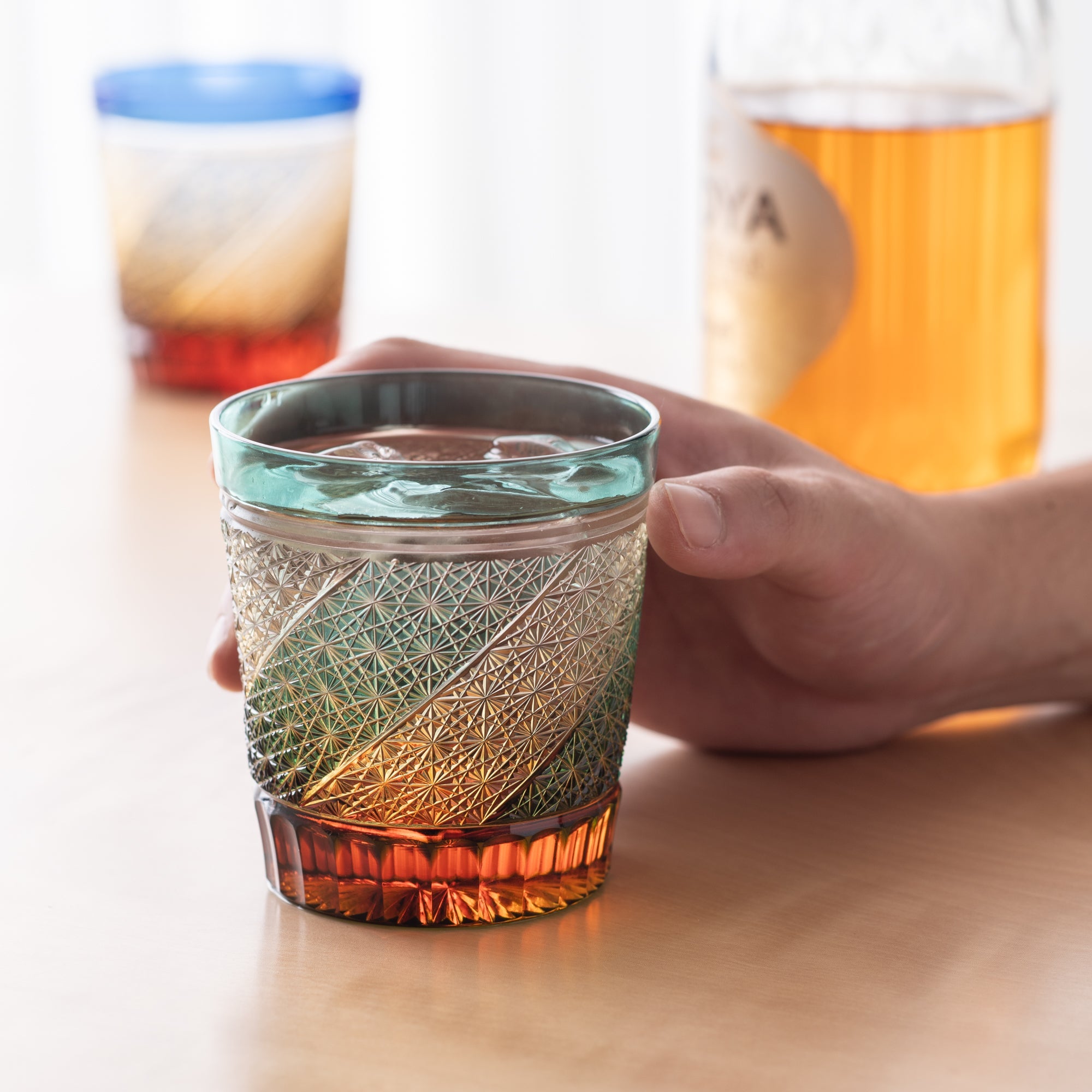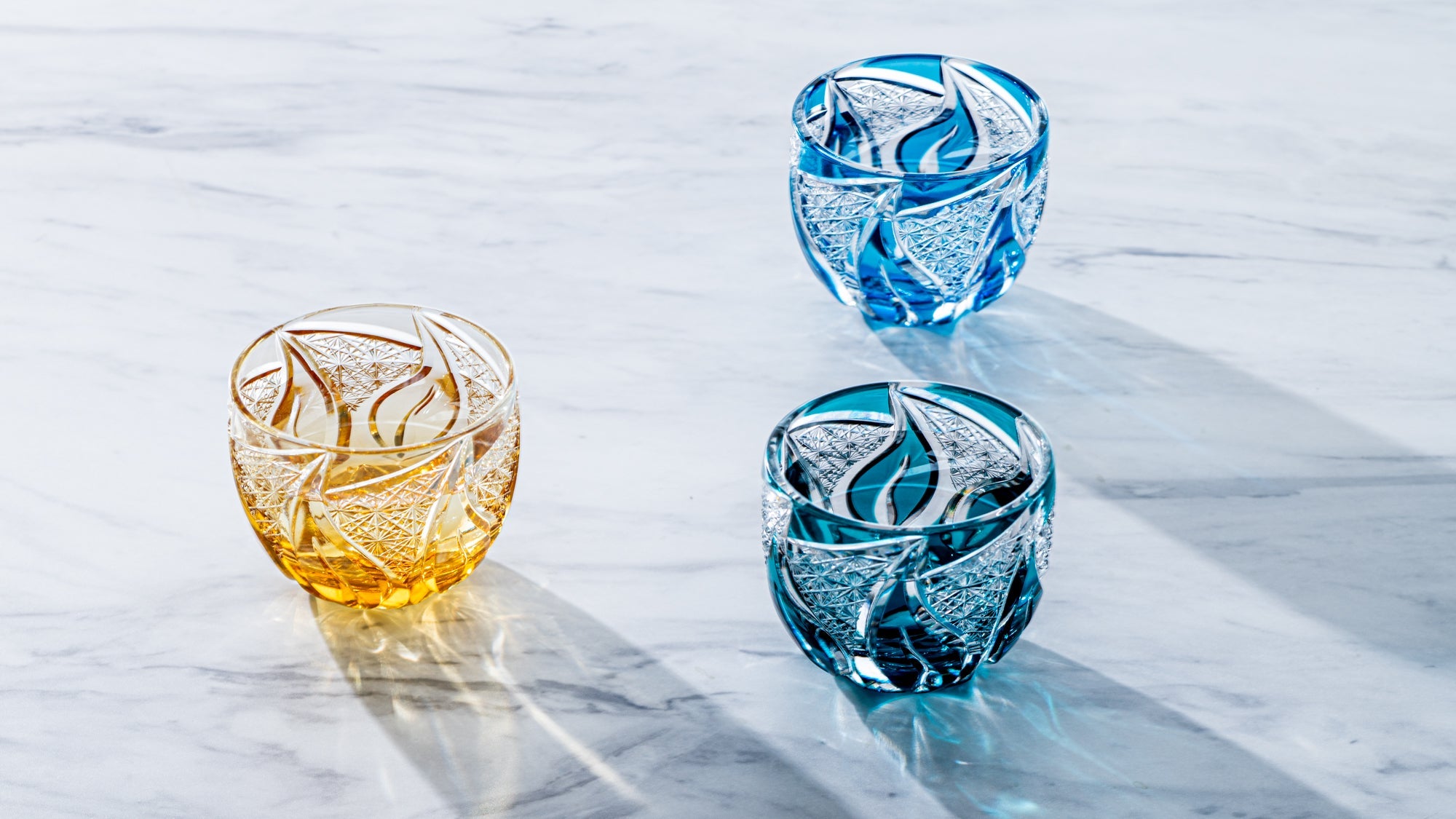
Kiyohide Glass
Passing on the traditional technique of hand-polishing, Kiyohide's glassware possesses an intriguing shine that captivates the beholder. As a certified member of the privileged Edo Kiriko Cooperative Association and a nationally acclaimed craftsperson, Kiyohide presents us with the utmost refined and sophisticated designs in the art of crystal Japanese glassware.
Kiyohide Glass is led by master craftsperson Kiyohide, who has dedicated his life to glassmaking. His works are known for their delicate, intricate patterns, crafted with remarkable precision and a deep mastery of technique.
He began training at eighteen, shortly after high school, and spent fifteen years apprenticing under a seasoned artisan. Today, he holds the prestigious title of Edo Kiriko Craftsperson in recognition of his accomplishments.
Since the beginning of his career, Kiyohide has focused on hand-polishing, a time-consuming but essential technique that he has spent nearly half his career perfecting.
While acid polishing allows for a wider range of expression, hand-polishing produces a distinctive brilliance that sets his work apart. By offering pieces made with both methods, he encourages customers to explore their differences and choose what speaks to them.
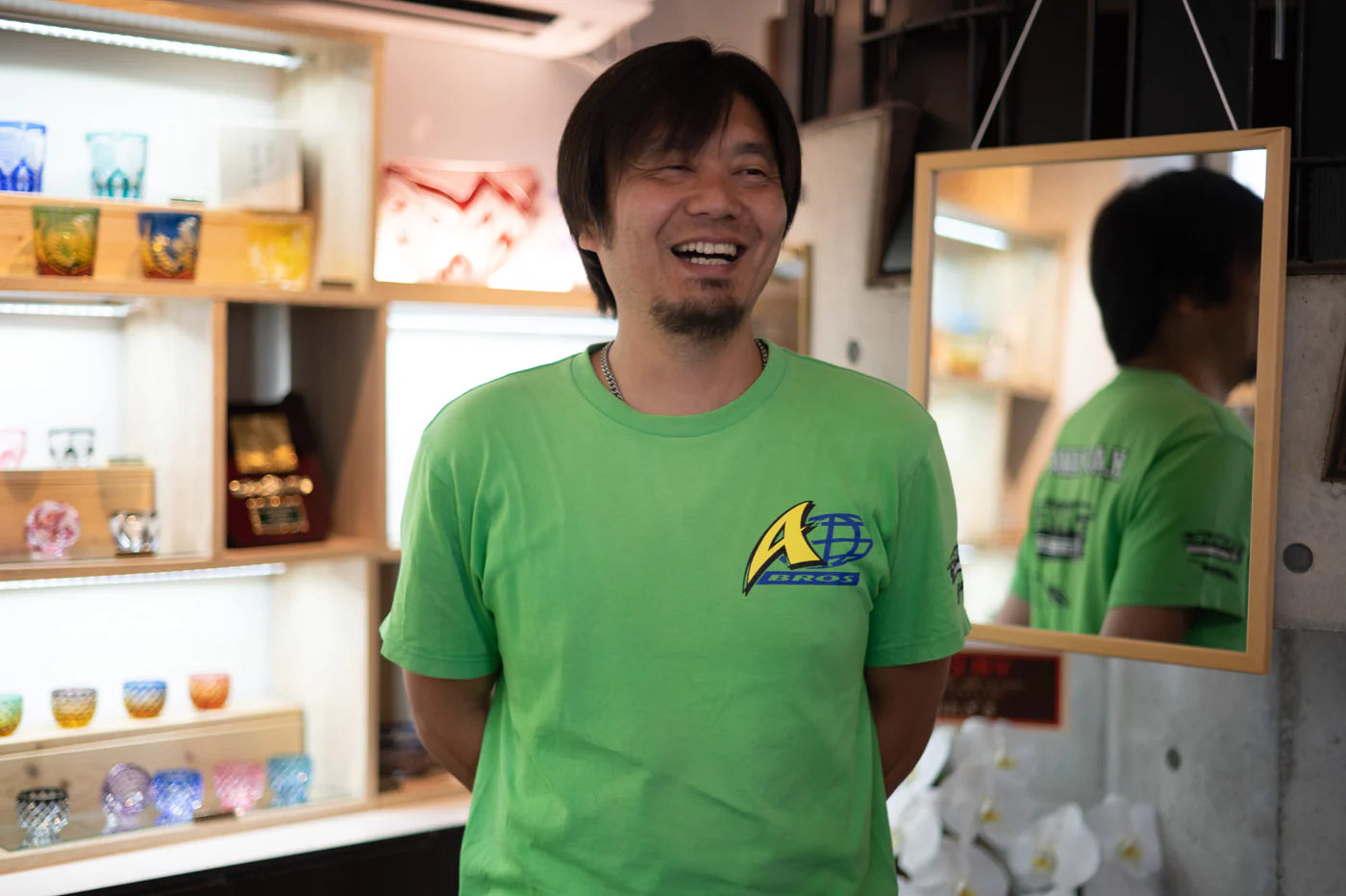
Exquisite Glass Cutting Patterns
The cutting process involves pressing the glass against a spinning metal wheel to create elaborate designs. Carving patterns along the curved and angled surfaces of the glass requires not only accuracy but also confidence and years of experience to achieve flawless results.
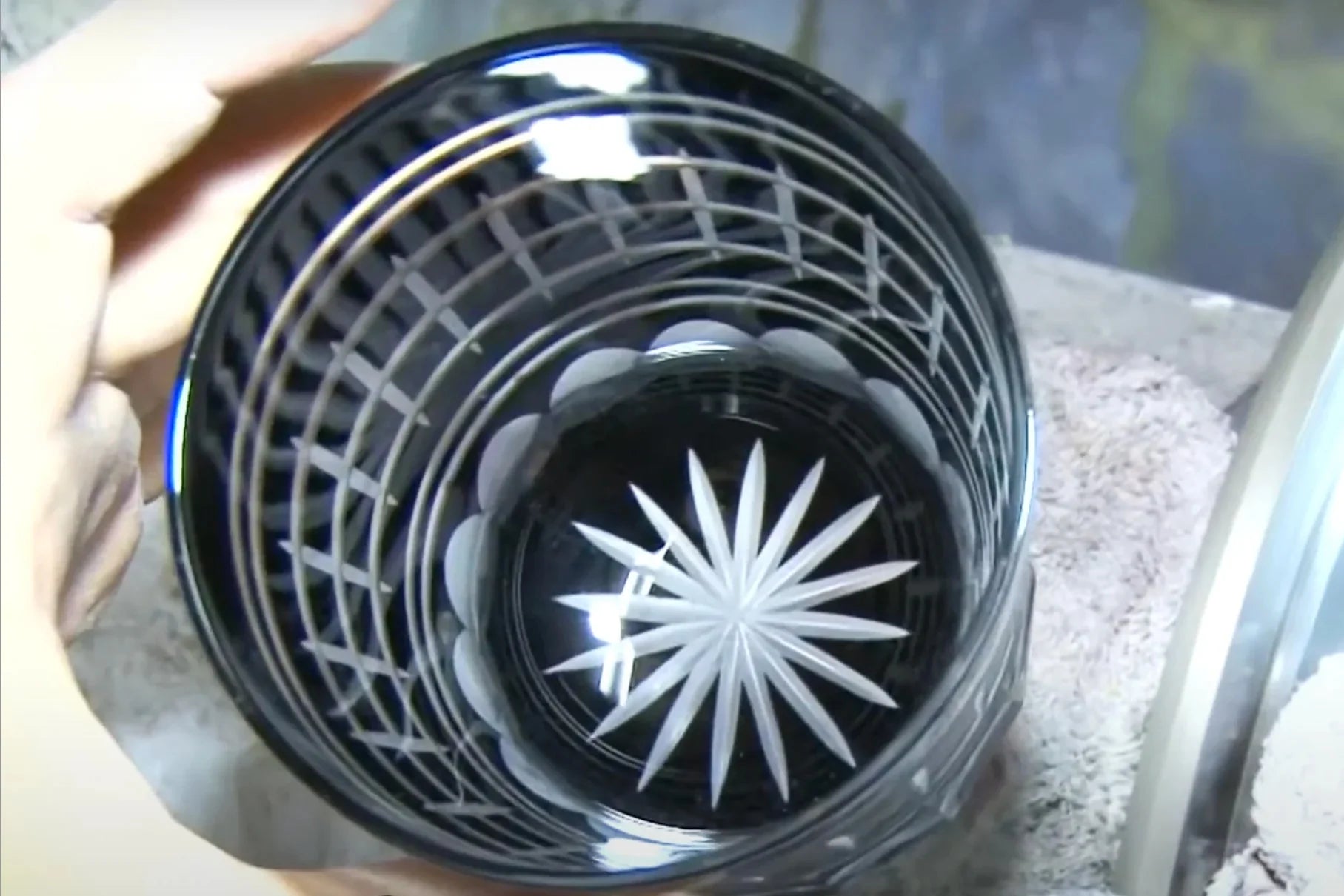
Traditional Handcraft and the Creativity of Acid Polishing
Once a common technique among Edo Kiriko artisans, hand polishing has become increasingly rare due to its delicate and time-consuming nature. The process involves multiple stages, during which the glass is carefully polished using cerium and wooden spinning wheels, as the craftsperson meticulously traces each cut to enhance its shine.
In contrast, acid polishing is a modern technique in which cut glass is submerged in an acidic solution, resulting in a smooth, lustrous finish similar to that achieved by hand. This method allows for more detailed designs that would be difficult to accomplish through hand polishing alone.
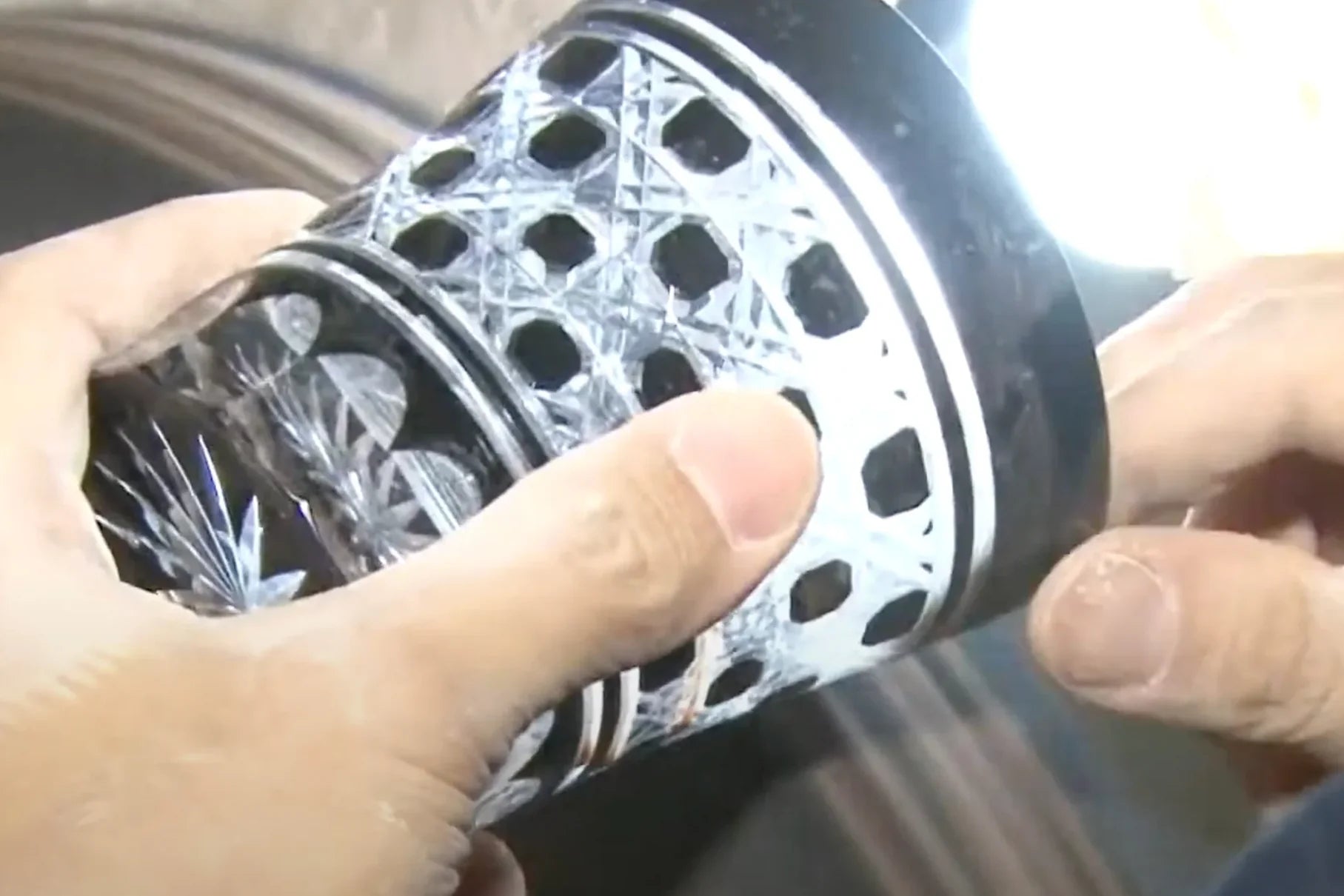
Origin & Other Makers
Related posts
Filters


